Pizza on the rise




Columbia Under Construction


From public projects to private expansion, see some of the most important building projects underway in the Midlands. Page 31




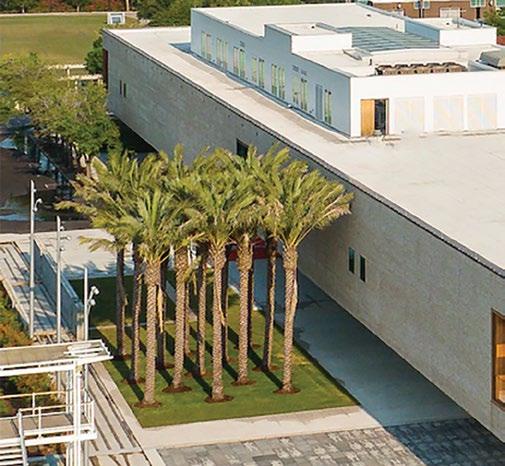








From public projects to private expansion, see some of the most important building projects underway in the Midlands. Page 31






That’s a question many companies were asking themselves long before the recession exposed the cracks in the market for skilled and professional labor. With an unemployment rate of 3.17% on average for the first four months of 2023, South Carolina, like the nation as a whole, has one of the lowest rates of unemployment on record.
South Carolina’s Department of Employment and Workforce has a task force designed to analyze the data and determine how and why people might not be entering the workforce in the Palmetto State.

The task force determined a number of reasons for individuals not fully entering the workforce, including retired workers, students, or workers with disabilities and health issues.
After accounting for those variables, 28% of workers have exited the labor market but are elibile to work. Among the reasons cited for not working include lack of high-paying jobs, lack of transportation, lack of child care and flexible hours.
Along with that analysis, SC DEW also determines where the most workers are entering the labor market in South Carolina. This could help direct resources and efforts to find under employed areas of the state and overcome barriers to employment to help workers and businesses find a way to grow the state’s economy together.
Perhaps unsurprisingly, the most populated counties with the most opportunities for housing, transportation, and higher-paying jobs, have a higher concentration of workers compared to the population of working-age adults.
by Andy OwensThe following counties have the highest participation of labor in South Carolina, according to the latest dates from SC Department of Employment and Workforce. Overall, the state has an average participation rate of 56.3%, which is 11% less than the national average.
2,406,354
Size of South Carolina’s workforce as of April, which is an increase of 9% from the same month 10 years ago.
56.3%
Source: SC Department of Employment and Workforce
10
Number of counties in South Carolina with a Labor Force Participation Rate of under 50%, with Marlboro County the lowest at 36.2% of working age adults holding jobs. 36
Number of counties in South Carolina with a participation rate above 50%.


South Carolina’s Labor Force Participation Rate, a rate that indicates how many of the state’s eligible workers 16 years and up are engaged in making money for labor.
1
Number of counties in South Carolina with a Labor Force Participation Rate above the national average of 62.6%. Charleston’s rate is 65.7% for April 2023.
Source: SC Department of Employment and Workforce
“Our plan is to grow organically from the Columbia market – we don’t have an aggressive growth strategy right now because we want to be able to fully support these new partners.”
— Kelly Glynn, co-owner, Village Idiot Pizza


Developers are under contract to purchase an unused building in downtown Greer to turn it into an entertainment hub.
Developers Bryan Beal, CEO of Cra ed Community Concepts, and Nate Tomforde are bringing Trade Street Social to Trade Street, next to the Greer Chamber of Commerce building.
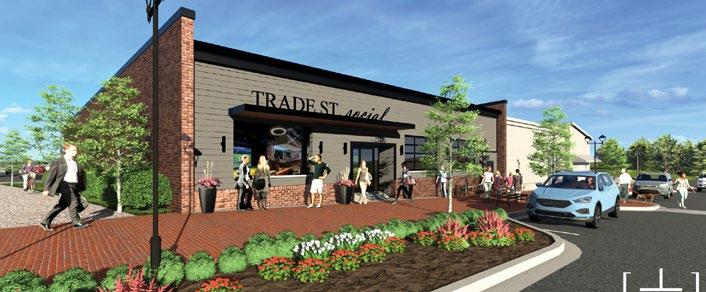
Trade Street Social will focus on entertainment, featuring arcade games, virtual golf and racing simulators, bowling, with a full bar and food menu, patio seating and roll-up doors at the front of the building.
“ e city of Greer has done such a great job with their downtown and this hub would add to what they have downtown currently,” said Beal. “ is is a great opportunity for us to focus on bringing the entertainment aspect to downtown Greer.”
Beal said they expect to close on the purchase of the building within the next month — a building that has been unused for more than 10 years, he said. Financial terms were not disclosed.
Aglobal industrial equipment manufacturer is expanding its Charleston County operations with a $10.1 million investment.
Protego (USA) Inc.’s investment will create 39 new jobs, according to a news release from the Department of Commerce.
With current operations at 9561 Palmetto Commerce Parkway in North Charleston, the company plans to expand its existing facility and transition from assembling to manufacturing tank venting and explosion protection product lines, the release stated. e expansion will also allow the company to implement production welding and computer numerical control machining capabilities.
“We are excited about the expansion of our Landmark Business Park building on Palmetto Commerce Parkway,” Protego (USA) Inc. President Chris Mason said in the release. “Our goal is to provide excellent products and services and with the expansion we will be able to increase our raw materials supplies from our domestic U.S. supply chain.”
JULY 17
STARTUPS
List: Business Assistance Organizations
Advertising Deadline: July 3
AUGUST 14
REAL ESTATE
List: Commercial Real Estate Firms, Residential Real Estate Firms
Advertising Deadline: July 31
SEPTEMBER 11
List: General Contractors, Architecture Firms
Special Section: Under Construction

Advertising Deadline: August 28
OCTOBER 16
MANUFACTURING
List: Manufacturing Companies, Aerospace Companies
Advertising Deadline: October 2
Donna Bischo , publisher SC Biz News dbischo @bridgetowermedia.com • 843.804.6093
Jason Thomas, executive editor jthomas@scbiznews.com • 864.568.7570
Ross Norton, managing editor-content rnorton@scbiznews.com • 864.642.5229
Andrew Sprague, managing editor-production asprague@scbiznews.com • 843.628.4738
Christina Lee Knauss, sta writer cknauss@scbiznews.com • 803.753.4327
Krys Merryman, sta writer kmerryman@scbiznews.com • 864.640.4418
Steve McDaniel, editor Custom Publishing Division smcdaniel@scbiznews.com • 843.628.4744
Columbia’s Peak Drift Brewing Co. recently launched Peak Press, its new sustainable digital can printing program.
e program harnesses the power of the brewery’s new state-of-the-art, 17-ton, high-volume commercial printer to print graphics directly onto cans, making all cans completely recyclable.
Equipped with the cutting-edge Hinterkopf digital can printer, which is currently the only one of its kind in the Southeast, Peak Dri can achieve printing speeds of up to 350 cans per minute, ensuring ecient production, company o cials said.
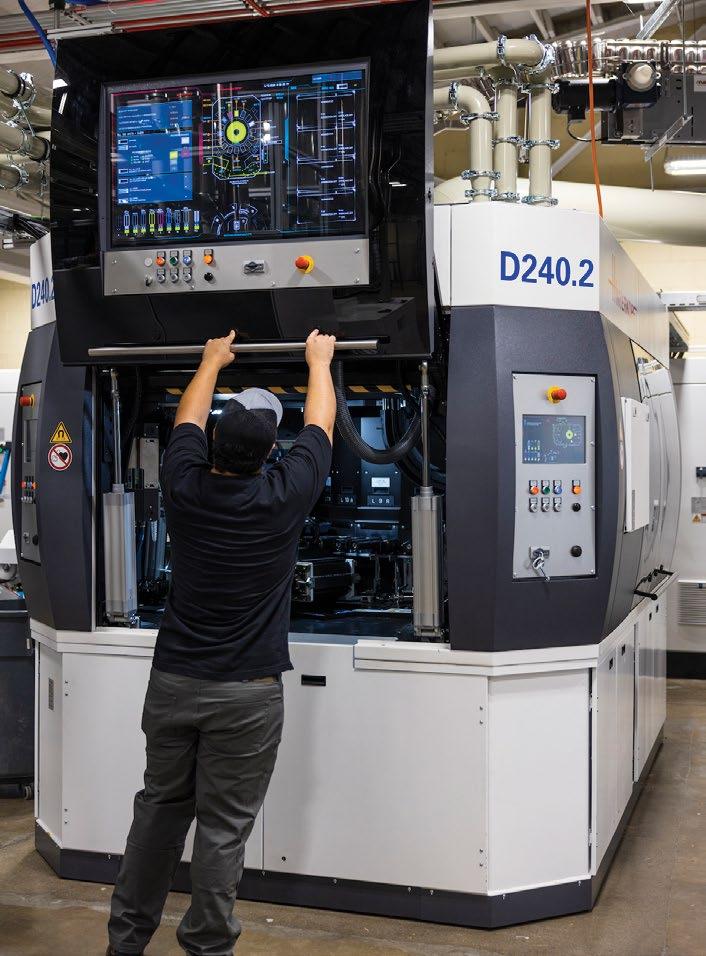
“Due to the nature of small production runs in the cra beverage industry, many cans are printed with labels or shrink wraps, which unfortunately, are not recyclable,” says Sara Middleton Styles, co-owner of Peak Dri Brewing Co. “Our new printing initiative aligns with our core values of environmental stewardship and customer-centric innovation. We are excited to o er our customers, along with others in the industry, a more sustainable option for cra beverages.”
Ryan Downing, director of sales rdowning@scbiznews.com • 864.867.1928
Account Executives Amanda Alford, multimedia account executive aalford@bridgetowermedia.com • 864.720.1223
Shannon Pollard, multimedia account executive spollard@scbiznews.com • 843.804.6094
Tony Rossi, multimedia account executive trossi@scbiznews.com • 864.867.1920
Jim Wheeler, multimedia account executive jwheeler@scbiznews.com • 843.628.4752
Events Lauren Medders, event manager/manufacturing conference lmedders@scbiznews.com • 864.720.1220
Accounting ar@bridgetowermedia.com
e launch of this program marks a signi cant milestone in Peak Dri ’s ongoing mission to revolutionize the cra beverage industry. By pioneering eco-friendly printing practices, Peak Dri is now making its printing solutions available to other breweries and special events — with the hopes to expand its reach in the future.
“ e best part of this program is that we aren’t limiting this technology just to Peak Dri ,” said Jason Snyder, Peak Dri ’s vice president for sales and operations. “Our commitment to sustainable printing goes beyond our own practices. By embracing advanced digital technologies and opening our printing capabilities to others, our hope is to reduce the beverage industry’s environmental footprint, while also encouraging creative and commemorative can design.”
All Peak Dri products moving forward will be printed with this new printer, including the company’s recently launched summer rotating series, which features the Peak Dri Summer Lager, Passionately
Sour Ale and Waterfront IPA. Additionally, Peak Dri has started working with local breweries and events to print commemorative cans, including Rosewood Craw sh Festival, the erapy Place’s Miracles in Motion 5K and Cra , and Dra ’s 9th anniversary, among others.
Company o cials said this new innovation reinforces the company’s commitment to environmental responsibility and also enables them to tap into the increasing
market demand for sustainable printing solutions within the cra beverage industry.
Peak Dri products are available in restaurants, bars and stores across the Midlands area and at Smoked in Columbia, which houses Peak Dri ’s microbrewery. e brewing company was founded in 2021. Its 64,000-square-foot brewery and entertainment complex located at 3452 Main St. is set to open to the public later this year.
877.615.9536
Riverbanks Zoo and Garden in Columbia is building a new, larger habitat for its popular Komodo dragons.
e expansion is the next step in phase one of the Zoo’s Bridge to the Wild development project, according to a news release. e expanded facility will o er more engaging, up-close views of the endangered lizards and more space in hopes of baby dragons in the future.
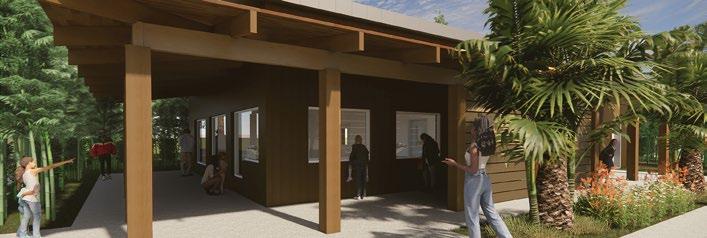
e expansion is funded by a bequest from the late Lloyd L. Liles and Doris N. Liles.
“Komodo dragons are one of the most charismatic reptile species,” said Sean Foley, curator of herpetology at Riverbanks. “Creating a larger space with a multitude of new views for guests not only is exciting for Riv-
erbanks and our community but also bene ts the animals as a whole as we work toward the goal of having a long-term sustainable population.”
One of 238 institutions accredited by the Association of Zoos and Aquariums’, Riverbanks collaborates with other AZA-accredited facilities in Species Survival Plan

programs to ensure genetic diversity among animal populations in human care. e new facility will enhance the Zoo’s ability to breed, house and care for Komodo dragons as recommended by the survival plan.
e zoo’s current pair of Komodo dragons hatched in 2011. When the siblings arrived at Riverbanks in 2015, they weighed only a
half pound each, according to information provided by the zoo Today, the male weighs nearly 120 pounds. Plans to obtain another male are in the works. e new habitat will o er more indoor space for the additional dragon plus room for future hatchlings.
Phase One of Bridge to the Wild is a $32 million privately funded investment including a white rhino habitat, infrastructure improvements, and the new Darnall W. and Susan F. Boyd Aquarium & Reptile Conservation Center, which opened to rave reviews in March and has been attracting large crowds. is phase is made possible through Riverbanks’ earned revenue and in partnership with the State of South Carolina, e Boyd Foundation, Riverbanks Society, and private donors including the Liles’ legacy gi . An additional project announcement is slated for later this year.



The Caterpillar hydraulics plant in Sumter will close early next year.
e heavy equipment manufacturer is closing its hydraulic cylinder plant at 650 Je erson Road, which will a ect 150 workers, according to company o cials. e plant
opened more than 20 years ago and is one of two Caterpillar sites in Sumter. e closure does not a ect the company’s Sumter Precision Pins facility at 1355 N. Wise Drive, which will remain open, o cials said.

future competitiveness, we plan to consolidate operations at our Sumter hydraulics facility into other existing facilities early near
year,” said Brant Watson, senior communications representative for Caterpillar. “We will do our best to redeploy a ected employees.
Joliet, Ill. to Sumter. e expansion enabled the plant to build both small and large hydraulic cylinders and made the Sum-

The owners of a beloved locally owned Columbia pizza chain are expanding into franchising.

Village Idiot Pizza, which started in Five Points and has been in business for 32 years, is now o ering franchises around the Southeast.
Owners Brian and Kelly Glynn, who purchased Village Idiot in Five Points from its original owners in 2003, will be a driving force in supporting future franchisees.
e husband-and-wife team met at Village Idiot when both were in their 20s and working in the original restaurant. ey have since expanded to two other locations: 4517 Forest Drive in Forest Acres and Olympia at the Mills o Whaley Street.
e Glynns told SC Biz News that the idea to franchise came a er the restaurants endured the turbulence of the COVID-19 pandemic, including forced closures, limited dining opportunities and sta ng shortages.
“ e decision was kind of born out of the pandemic, because we realized that we had probably gone through the hardest time in our industry that anyone could experience,” Kelly Glynn said. “We decided we really wanted to see how much more we could grow and bring what we think is a great model into other communities.”
Long-time customers from other parts of South Carolina and many other states have been inquiring for years about when the chain was going to expand, Kelly Glynn said. ey regularly hear from people around the country who remember eating at Village Idiot during signicant times in their lives, especially their years at the University of South Carolina.
e restaurant’s original location in the college student mecca of Five Points is especially associated with the USC experience for many people, she said.
Because of Village Idiot’s continued popularity with both current USC students and alumni, the Glynns think the brand would be especially well-suited to franchises in college towns around the Southeast.

For guidance as they embark into franchising, the Glynns said they have consulted with the owner of another local restaurant icon, Groucho’s Deli, which also got its start in the Five Points area.
Groucho’s, named a er founder Harold “Groucho” Miller,” rst opened in 1941 and has since become famous for its large menu of sandwiches and selection of signature dressings. e current owner of Groucho’ s, Bruce Miller, is following in the footsteps of his grandfather and father. He decided to branch out into franchising in 2000. ere are now 25 locations of Groucho’s around South Carolina, three in North Carolina and one in Georgia.
“ e rst time we met with him, it was great to see how excited he was about us planning to franchise,” Brian Glynn said. “He knows what we are and has been very supportive and showed a lot of con dence in what we’re doing.”
Both Glynns said the most crucial lesson they learned from Miller was the fact that running a restaurant and running a franchise system are two di erent businesses.
“We learned that we’ve got to be able to change our mindset to be able to fully support our other operators,” Kelly Glynn said.
e Glynns have been working on the franchise launch for about a year and said since rst announcing their decision to franchise, they’ve had several dozen inquiries from interested people around the Southeast, as well as some other regions.
“Our plan is to grow organically from the Columbia market – we don’t have an aggressive growth strategy right now because we want to be able to fully support these new partners,” Kelly Glynn said. “Our targets o the bat are locations in northeast Columbia, Lexington, Irmo, Chapin, and maybe eventually Spartanburg and Charleston.”
e franchise decision adds to an already notable year for the Village Idiot brand. In late 2022, they were inducted into the Columbia Restaurant Hall of Fame.
More information about Village Idiot franchising can be found online. ose interested can also contact vipfranchising@ villageidiotpizza.com.












ASouth Carolina manufacturer of peptides is upgrading its North Augusta plant with equipment to help meet demand for its international customer base.
AmbioPharm, which also maintains its headquarters in North Augusta, produces peptide active pharmaceutical ingredients at varying scales, from a gram to kilograms, for some of the world’s largest biotech and pharmaceutical companies as well as customers seeking small batches, according to its website.
Peptides are chains of amino acids — the building blocks of proteins — that are naturally found in your body, according to Health. com. ey can also be found in foods, supplements, medications and skincare products.
“AmbioPharm South Carolina continues growth to meet capacity demands for late phase and commercial peptide production while increasing our sustainability e orts,” the company said in a news release. “In order to meet customer needs, we contin-
ue to make state-of-the-art upgrades to our AmbioPharm South Carolina headquarters, including increasing synthesis capacity at this location.”
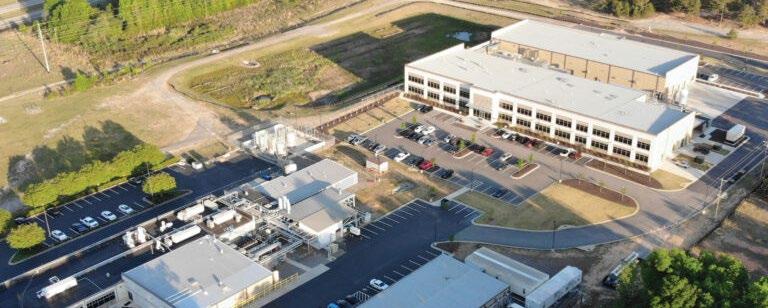
New equipment includes a high-performance liquid chromatography column, a 1,000-liter lyophilizer, a tangential ow ltration system with centrifuge, a large walkin stability chamber and a walk-in freezer.
e company said other equipment has been added to increase U.S. production
using greener chemistry to support manufacturing, including microwave peptide synthesizers for small and larger capacity production, and chromatography equipment used to improve yield while discarding impurities.
e cost of the capital improvements was not disclosed.
e microwave peptide synthesizers enable this location to perform U.S. crude peptide production for both nonGMP and
GMP requirements, with plans for additional synthesis capacity in the future, the news release stated.
“In addition, we have made technology investments in our Quality Organization including the implementation of Master Control as a part of the Quality Management System as we strive to build quality into every step of our process,” AmbioPharm said in the release. “ ese upgrades allow AmbioPharm to continue to support our customers from early phase toxicology batches through large scale commercial manufacturing, with annual production capacity up to a metric ton. Using our expertise in peptide synthesis, we are able to tackle both simple and complex peptide projects with a proven history of success at research, clinical and commercial scales.”
AmbioPharm produces custom products for research, clinical development, and commercial application for pharmaceutical and biotechnology companies worldwide, according to the company website. AmbioPharm also has a manufacturing campus in Shanghai, China.
Marcus & Millichap, a commercial real estate brokerage firm specializing in investment sales, financing, research and advisory services, was involved in the sale of Garners Ferry Crossing, a 45,270 square-foot Walmart Shadow Center in Columbia, for $7,850,000.
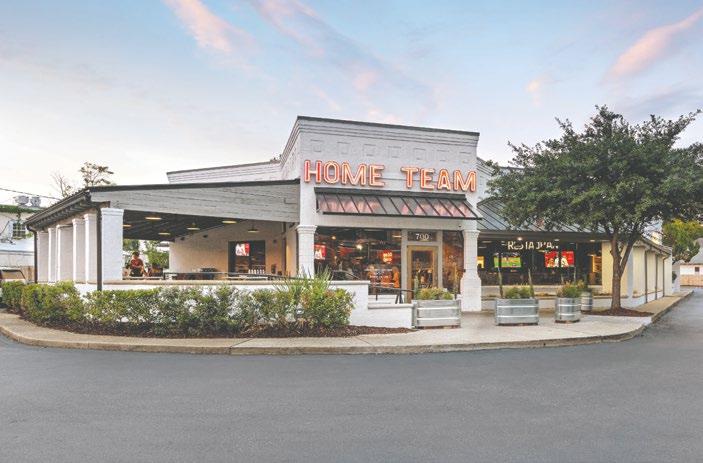

e property sold with a 7.5% cap rate, John M. Leonard, regional manager of the rm’s Atlanta o ce, said in a news release.
“Leveraging from vast network of relationships and meticulously developed vetting process, my team was able to identify a


high-caliber buyer, who closed on contract terms,” Leonard said in the release.
“I have known Peter Hogan with Rotella Group for several years, who represented
the buyer,” Al Taf, the senior vice president of investments at Marcus & Millichap, said in the release. Al Taf has worked from the Atlanta o ce of Marcus and Millichap
since 1999.
Taf, an investment specialist, had the exclusive listing to market the property on behalf of the seller, an individual/personal trust. Broker of Record, Ben Yelm, helped with the transaction.
Garners Ferry Crossing is located at 7546 Garners Ferry Road at the signalized intersection with Daphne Road. e center’s tenants include a variety of retail, dining and service-based businesses including Dollar Tree, Shoe Show, Cato, GameStop, H&R Block, Boost Mobile, American Deli, Kathy’s, Nails, JD’s Fashions, and Regional Finance Corporation.




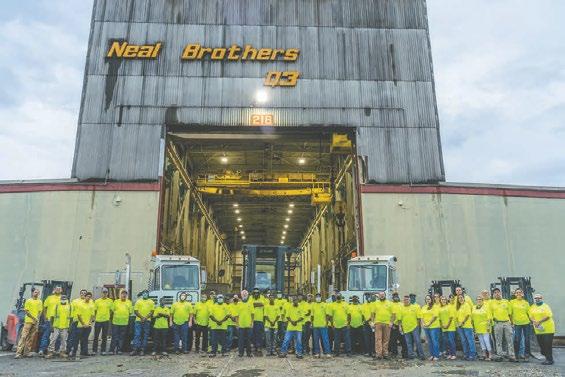
 By Christina Lee Knauss cknauss@scbiznews.com
By Christina Lee Knauss cknauss@scbiznews.com
A5,095-square-foot historic hometurned-office in downtown Columbia has been sold.
Colliers South Carolina’s Mary Winter Teaster represented Wes Graves in the sale to Todd Avant/Avant Holdings LLC.
is building is located at 1598 Richland St. in the Historic House and Garden District. Built in 1841 and purchased by General Maxcy Gregg in 1854, this historical landmark was a residence for nearly a century, was converted to o ce use in 1974 and housed Harris & Graves Law Firm for many years.
e buyer, Todd Avant, has extensive plans to restore the Maxcy Gregg
property to its original classic historic features. e building will become home to another law rm and will also have space for lease.
Teaster of Colliers South Carolina has assisted in multiple property transactions located in the historic areas of downtown Columbia.
“I love seeing this type of renovation transform older properties to their original state,” Teaster said in the release. “It takes a special buyer to recognize the history of a building and be willing to invest a signi cant amount of time and investment to return it to glory!”
Teaster is a Senior Brokerage Associate with Colliers South Carolina with a focus on local small businesses, women-owned businesses and nonpro t organizations.
South Atlantic Canners Inc., a Coca-Cola production cooperative that includes several Coca-Cola distributors, is investing $28.7 million to expand its operations in Lee County. The investment is expected to create 15 new jobs over the next five years.

South Atlantic Canners is managed by Coca-Cola Consolidated Inc., the largest independent Coca-Cola bottler in the United States. Coca-Cola Consolidated, Inc. distributes and produces more than 300 brands and avors of beverages across 14 states and Washington, D.C., to more than 60 million people.
“ is investment reinforces the commit-
ment of Coca-Cola distributors to manufacture our products in Lee County and South Carolina,” said Troy Santoscoy, senior plant
director for South Atlantic Canners Inc.
“ is investment will positively impact our ability to serve our teams, customers and
communities, and hopefully encourages future economic development in the region.”
Located at 601 Cousar Street in Bishopville, South Atlantic Canners plans to renovate its existing facility and add new, stateof-the-art equipment.
“South Atlantic Canners is a substantial and sound company in Lee County,” said Lee County Council Chairman Travis Windham. “ eir signi cance is evidenced by not only providing quality jobs and investment, but also by being a strong community partner and steep stakeholder. We are excited about this second expansion.”
e expansion is expected to be complete by late 2027.
Initial hiring for new positions is underway and more information is available online.
 By Christina Lee Knauss cknauss@scbiznews.com
By Christina Lee Knauss cknauss@scbiznews.com
AWest Columbia-based company has purchased a 61.3-acre site at Sandy Run Industrial Park in Gaston to expand operations.
Blanchard Machinery Co. is expanding its existing operation for parts, service, component rebuilds, complete machine rebuilds and additional support services for its other 14 branches across the state, according to a news release.
Sandy Run Industrial Park is located on 15th Street in Gaston in Calhoun County.
Blanchard Machinery’s corporate campus is located at 3151 Charleston Highway in West Columbia and will
continue to be the home of corporate administration functions, machine sales, used parts and Blanchard Energy, according to the release.
Colliers South Carolina’s industrial
(Illustration/Provided)
brokerage team of Chuck Salley, Dave Mathews, omas Beard, and John Peebles represented Blanchard Machinery Co. in the transaction.
“Once we determined our need to
expand onto a green eld site, we engaged Chuck Salley and his team to nd us the best location possible in the Midlands,” said Boyd Blanchard, president of Blanchard Machinery. “We are extremely pleased with our new site at Sandy Run Industrial Park and the partnership with Colliers that made it possible.”
LCK, Colliers South Carolina’s project management partner, will oversee the construction of the facility. Cox & Dinkins will serve as the civil engineer and Boudreaux Group as the architect.
“Sandy Run Industrial Park, located in Calhoun County just minutes from the intersection of Interstate 26 and Interstate 77, provided an excellent site for Blanchard’s current and future needs,” said Salley, managing director in Colliers’ Columbia o ce.


The annual exposition will run concurrently with all other conference events. The expo sets up on approximately three football fields of space and conference attendees must walk through the show floor to get to all other events, ensuring maximum traffic for exhibitors.

☑ 10x10 booth
☑ Entry for 2 to Welcome Cocktail Reception
☑ Attendee List with Contact Information
☑ 25% Discount on Breakfast/Lunch Conference Sessions
☑ Free Entry for Booth Staff to Exhibit Hall Including:
2,000+ Attendees
20+ Speakers Including SC Gov. Henry McMaster
215 Exhibitors

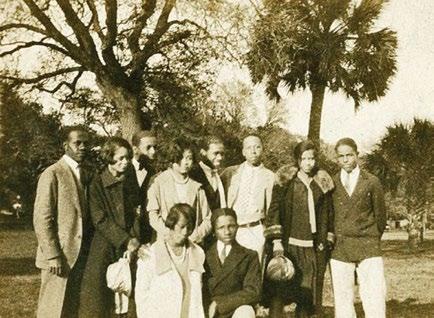





























On behalf of the entire team at Blackbaud, I celebrate the monumental opening of the International African American Museum, a long-awaited catalyst for education, connection, and growth. As a global company with roots in Charleston, we’re inspired by and honored to support IAAM’s expansive vision–capturing the regional significance of its site while bringing to light far-reaching stories of African American culture.
Blackbaud is proud to offer our support as the Museum illuminates the past and drives progress for the future through their programs and exhibitions. New initiatives like IAAM’s Center for Family History will build a vital sense of connection and identity through heritage research and public digital archives. The Museum’s opening is just the beginning of a new chapter for Charleston and the country. There is truly no limit to the experiences that IAAM can offer, and I look forward to continued partnership between Blackbaud and IAAM’s leadership, staff, and the board of directors as they steward this living history.
Mike Gianoni, president and CEO, Blackbaud


 International African American Museum Board Member
International African American Museum Board Member
An untold story is coming to life within the walls of the International African American Museum in Charleston.
As a media platform, we could never do justice to a narrative that transcends time, that whispers over a vast ocean, from the shores of Africa to those of our nation – to our very state. The museum, which will officially open June 27, documents the journey that began in Africa centuries ago, and still continues today. Its location, at the former site of Gadsden’s Wharf, which was the site where an estimated 100,000 enslaved Africans came ashore during the peak of the international slave trade, is sacred ground. Words could never properly explain the significance of the thousands of souls who passed over those waters and onto that soil, and the struggle that lay ahead.

This special section represents a portal to the people who had a key role in shaping what the museum would become, and their hope of what those who pass through its doors take away with them. It’s a resource for the museum’s message, as well as the Gullah Geechee culture that exists to this day.
With reverence we offer these pages.






































Since April of 2021, Tonya Matthews has gone through the joys and challenges of building a new museum, one that is unique not only in South Carolina but in the nation because it seeks to tell the story of African-American history from its roots in Africa to its impact in today’s world.
Matthews, CEO of the International African American Museum, arrived in Charleston in April 2021 bringing with her years of experience in the nonprofit sector, the sciences, museums and education.

Born in Washington, D.C., Matthews holds a degree in biomedical and electrical engineering and a certificate in African American studies from Duke University as well as a doctorate in biomedical engineering from Johns Hopkins University.
Matthews developed education programs for the Maryland Science Center and worked in the division of restorative and neurological devices for the U.S. Food and Drug Administration. She then became vice president of the Cincinnati Museum Center at Union Terminal, where she directed research and education.
She served as president and CEO of the Michigan Science Center and the as associate provost for inclusive workforce development and as director of the STEM Innovation Learning Center at Wayne State University in Detroit.
While at the Michigan Science Center, she founded The STEMinista Project, a movement to engage girls in their future with STEM careers and tools. She continues this work today through STEMinista Rising, supporting professional women in STEM – and the colleagues who champion them – with an inclusive emphasis on women of color.
Matthews recently took time out during the busy weeks leading up to the IAAM’s grand opening to talk with SC Biz News about her time in Charleston and her hopes for the new museum.
What has the experience been like as CEO of a new museum, especially one with this much history involved?
This appointment felt like a collision of the professional and the personal. The opportunity to build




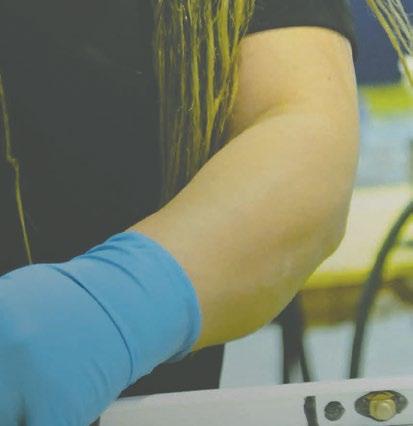
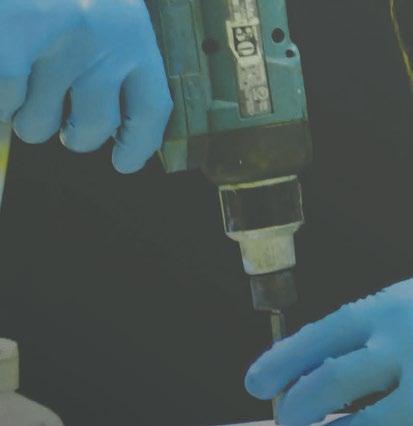
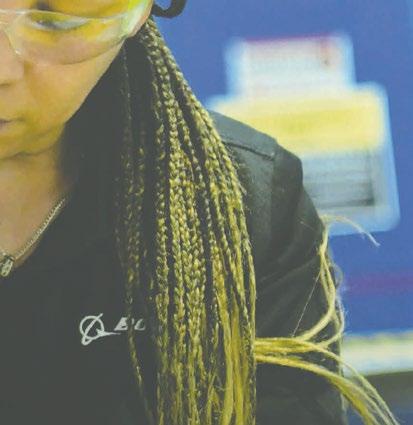
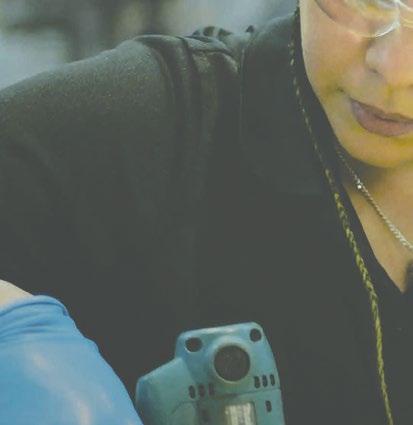


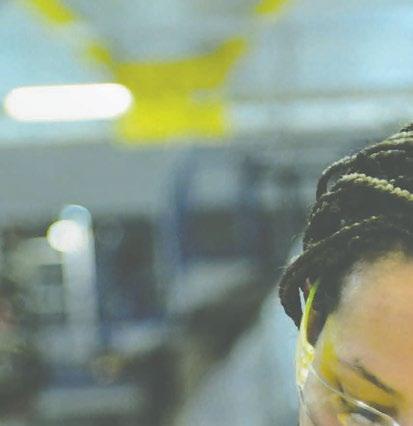
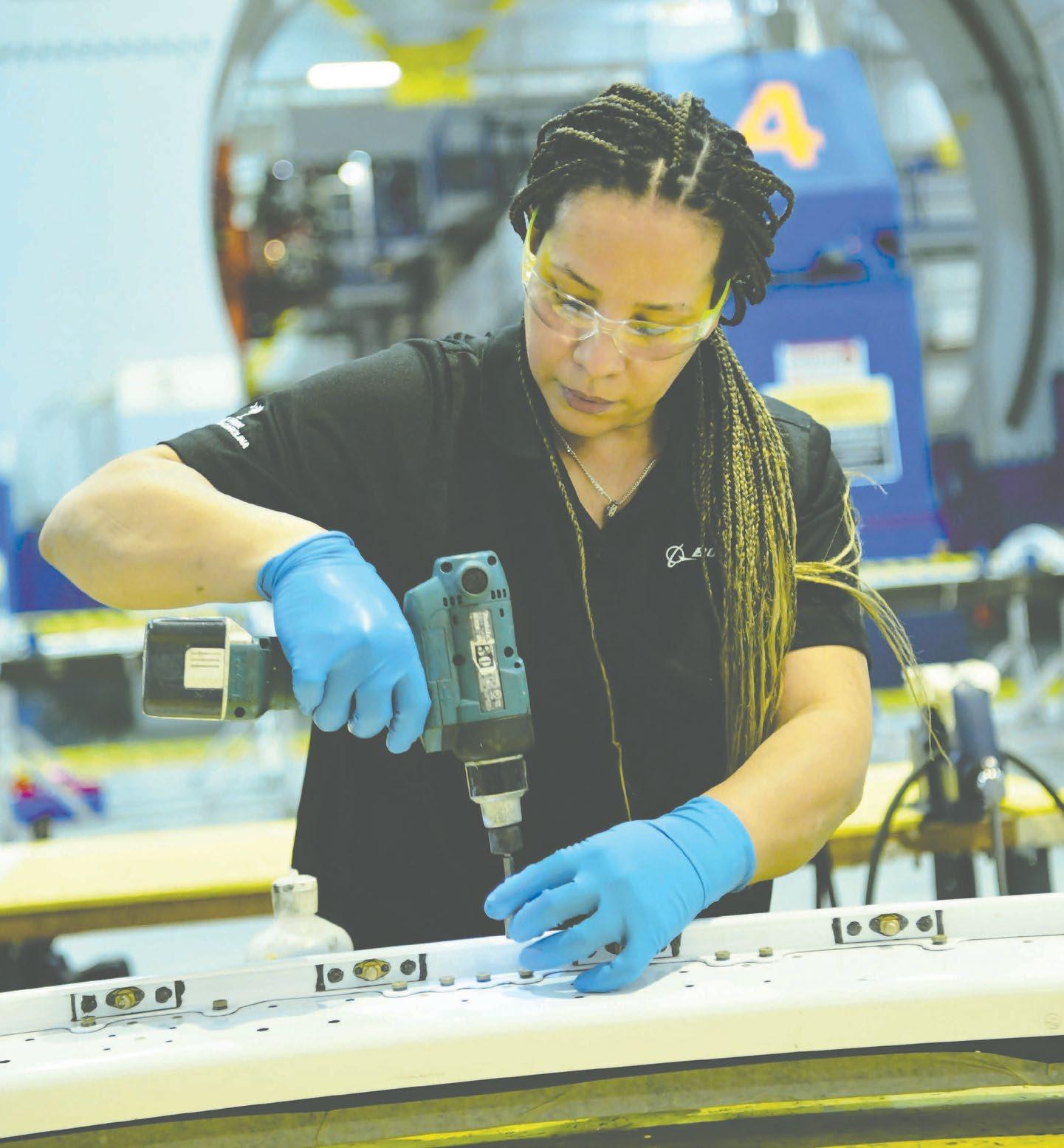





a museum from the ground up, help take it over the edge, and take it from the foundations an amazing opportunity, particularly for a museum of this scale, covering African American history and with its location and its place. For me personally it’s all resonating very deeply. I feel this is where I belong, this is what I’ve been trained for and led to do, so I’m very excited.
How has your previous museum experience helped you with your work in Charleston?
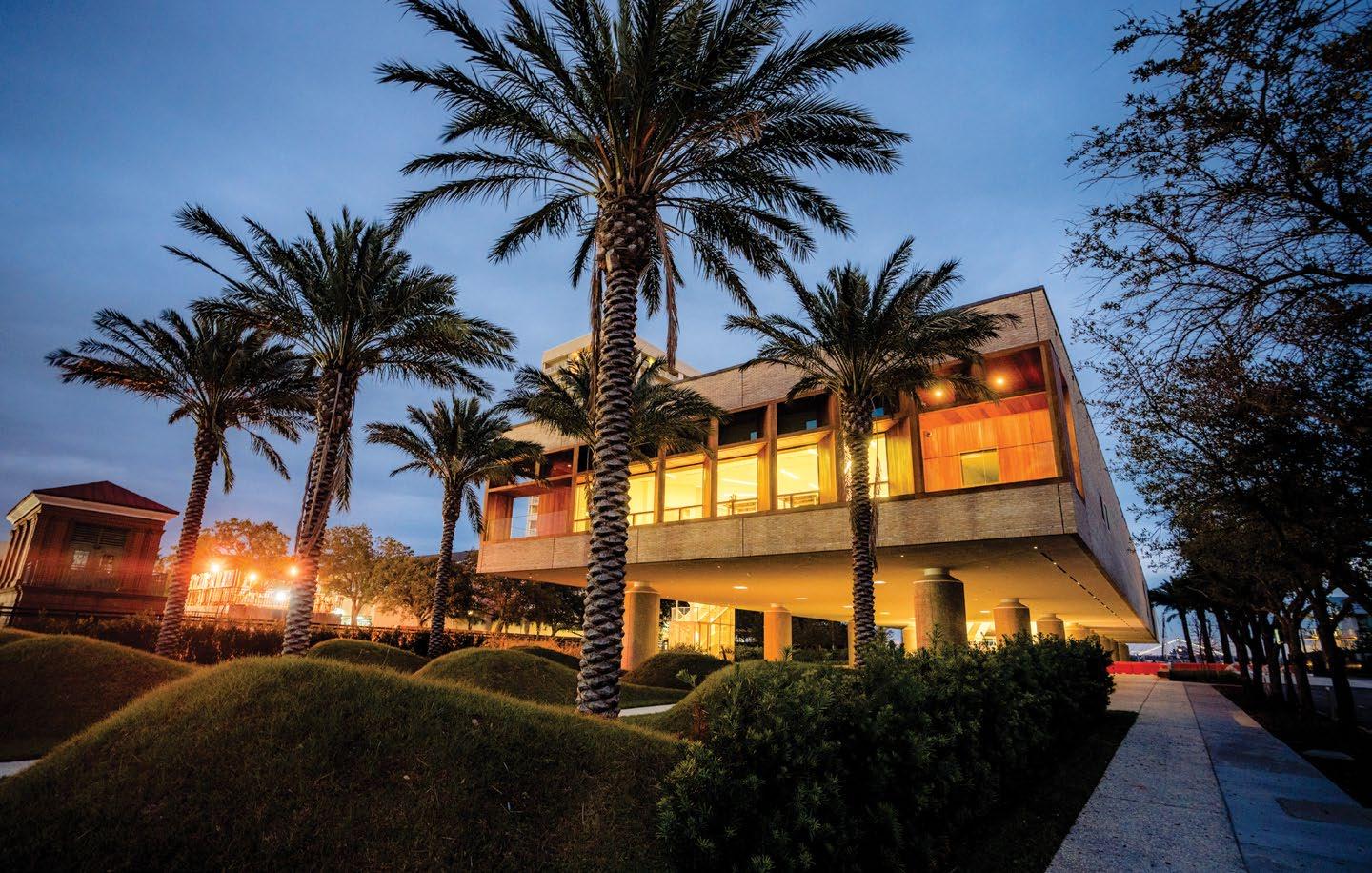
Very seriously, all of it has. In Detroit, my experience was bringing the museum back online, reconnecting an institution to community. In Cincinnati, my role was about transformation, creating a new type of museum out of traditional bone and also helping to steward the incorporation of the National Underground Railroad Freedom Center into that space. Even at Wayne State, my student programs were all about the art of making people comfortable with topics that people assume they are going to be uncomfortable about. In my previous world before museums, it was all about algebra and calculus, and now at museums it’s about telling untold stories about places and times that in some ways are so familiar to us.
What lesson or message do you want visitors to take away after visiting the museum?
I would like for our visitors to leave a little bit more curious because I think curiosity is a key. We tell a lot of stories, but we cannot tell them all. I think the museum will have been successful if we have visitors wanting to learn more, whether that’s going into our bookstore and looking for a book or asking volunteers and docents about how they can find more information and learn more. Regardless of the background you bring to the International African American Museum, if you leave a little bit more curious than when you came, that’s what success looks like. I’d also like our visitors to experience a wide range of emotions,
because one of the things we’ve tried to do is put these stories in their full context.
What impact do you hope the museum will have for the African American community in Charleston, the rest of South Carolina and beyond?
If we do our job right, the impact to the broader African-American community is about recognition and appreciation. so much of the story has been hidden or untold or told in a false way. Everything from the trauma of enslavement to the joy and recognition of innovation and invention has been a part of our story here, and the museum offers recognition of our incredible contributions, of how we are a piece of the fabric of this nation and not an add-on. We’re offering a beautifully designed space where the stories we tell can be truthfully and artistically told. It’s an incredible thing to have these stories told in a space so carefully cared for like this one.
What kind of an impact do you see the museum having on Charleston’s tourism industry, and its economy?
We’ve received an enormous amount of support from people on the tourism side of things here like Explore Charleston, and also our cultural heritage partners who have all been incredibly welcoming and excited about the museum. I think the impact we can have is as a history museum. Charleston already has developed a brand because of its history, and we are offering a chance to delve deeper. Our community is already phenomenal at offering historical experiences and storytelling, and we’re expanding the variety of both. We also open the door for additional tourists to come to Charleston, especially folks who are seeking different kinds of stories. We also have the power of place because of our location at Gadsden’s Wharf, so for
some people there is the pilgrimage element to coming here. We’re telling a lot of stories that align with a lot of different elements of Charleston’s history.
We’ve seen a really diverse base of business support for the museum. There are some folks that you would expect – veterans in the arts and culture world and philanthropy. We have a lot of support from banks like Bank of America and South State Bank, and other institutions known for showing up in these spaces. We’ve also had significant support from Michelin and Mercedes. I think it’s been very exciting to see all of the business community come together to understand and realize the value things like the museum bring to larger economic development in the region.
The IAAM also offers a unique element with the Center for Family History. Can you talk a little about why this space is unique?
Our genealogy center is as large as our largest gallery. We devoted that much space to it because of our role as an African American history museum. There are serious challenges in exploring African American histories, family histories, because of the interruptions of our space. We are uniquely positioned with our archives in the Lowcountry because this is where the largest concentration of people with African ancestry came through into the United States. Our records are particularly significant for that reason. I think we’ll be able to help people explore their genealogy because our records can help overcome periods of poor or dismissive record-keeping that affected African Americans. Charleston is also a perfect place for the Center because one of the things I’ve really enjoyed about South Carolina is this is a community that loves to tell stories. People tell stories about their grandfathers and great-grandfathers, and there are many multigenerational businesses here. This idea of ancestry is part of the cultural DNA of South Carolina.
The International African American Museum has released additional details for opening week events, including a worship service on June 22 and a dedication ceremony community gathering on June 24. The festivities will begin with an opening worship service on Thursday, June 22, at Morris Brown AME Church. Beginning at 6 p.m., the multi-faith celebration of IAAM’s opening will help build community, reflect on the work that led to the museum’s opening, and celebrate the long history of the African-American people and their culture, which is woven into the fabric of the museum. Registration is free but required for this event, according to an IAAM news release.

On Saturday, June 24, a dedication ceremony community watch event in Marion Square will bring visitors and members of the community together for a live simulcast of the ceremonies and presentations taking place at the museum and on-site at Marion Square, the release stated. Presented by Boeing, the watch celebration will include live performances from the “African American Songbook” featuring a 12-piece band, local and big-name musicians and artists, and refreshments from Black-owned food trucks.
Boeing South Carolina’s DreamLearners, an educational program that provides students with opportunities to learn about careers in STEM, advanced manufacturing, and aerospace, will also host a celebration event in the square. Led by the Boeing Black Employee Association, volunteers will help lead the interactive STEM-based DreamLearners programming, which will feature paper airplane building, flight competitions with free Boeing swag, and additional giveaway items. Registration for the public is not required.
Details are below.
What : IAAM will co-host a multi-faith-based worship service with Morris Brown AME to mark the opening of the museum.
When : Thursday, June 22, at 6 p.m.
Where : Morris Brown AME Church, 13 Morris Street, Charleston
Who : Speakers include Tonya Matthews (president and CEO of IAAM), Bishop Samuel Green, the Rev. DeMett Jenkins (director of education and engagement for faith-based communities at IAAM), among others.
What: The dedication ceremony community watch celebration will include a live simulcast of the ceremony, in addition to live performances by local musicians and artists, food trucks, and activities led by Boeing South Carolina DreamLearners. The presenting sponsor for the Dedication Community Watch Celebration is Boeing.
When : Saturday, June 24, at 10 a.m.
Where : Marion Square. 329 Meeting St., Charleston
Who : Boeing South Carolina DreamLearners, local musicians and artists, Blackowned food trucks, surprise guests, and more RSVP : The event is free and open to the public.
 By Christina Lee Knauss cknauss@scbiznews.com
By Christina Lee Knauss cknauss@scbiznews.com
For the past year, Malika N. Pryor has had to work on answering a question that not many people deal with in their lifetimes: how do you convey a story that is historically and emotionally complex to as many different people as possible, in a way that they will understand and embrace?
That has been Pryor’s challenge since July 2022 when she was appointed chief learning and engagement officer for the International African American Museum in Charleston.
Her role is to create programs and experiences for a diverse audience ranging from children to senior citizens and including everyone in between. The museum’s goal is to tell the stories of the African-American experience and its impact on the United States and the world, tracing those tales from their roots in Africa to arrival in the U.S.

This important historical work is being done on a site that many people consider sacred. The museum is built at the former site of Gadsden’s Wharf, which was the location where an estimated 100,000 enslaved Africans came ashore during the peak of the international slave trade.
Working to open the museum that will tell their stories as well as others has been the center of museum staff members’ focus for months.
“We’re in the home stretch now — it’s really an exciting time,” Pryor said in a recent interview with SC Biz News. “Everyone is working hard and doing the things that need to be done. I think it’s safe to say we all just feel so
honored and blessed to be able to be a part of this and bring it to the finish line. It’s an incredible honor, and I’m not sure those words fully encapsulate the emotion that comes out of this work.”
A background based on history
Pryor’s passion for preserving history and helping to interpret it for diverse audiences has led her to work here in the U.S. and abroad.
A native of Detroit, Pryor holds a bachelor’s degree in organizational studies and Afro-American and African studies from the University of Michigan in Ann Arbor and got a law degree from Wayne State University’s law school.
She practiced law in Atlanta for several years before returning to Detroit to begin her journey in the nonprofit and museum worlds by serving as director of education and programs at the Charles H. Wright Museum of African American History. She then started her own nonprofit consulting firm focused on serving emerging, communitybased organizations with an emphasis on those with BIPOC founders (Black, Indigenous and People of Color.)
From there, it was back to museums as Pryor joined the National Art Gallery of the Bahamas to establish the communications and education department. While living abroad, she also founded the Curlyfest Bahamas Festival.
After her time in the Bahamas, she returned to her home city to serve as senior director of education programs and outreach for the Detroit Historical Society, working on innovative programs and experiences such as “Invoking
EXHIBITS, from Page 20
the Spirit: Detroit’s Black Bottom,” a digital exhibition and walking tour depicting the lives of one of the city’s most historic African-American neighborhoods.
Pryor said one of the most intriguing challenges she faces is coming up with ways to inform people about the African American experience from both an international and very local perspective.
“Here in Charleston, I have had to activate and employ virtually every experience I’ve had in my work in the past, whether designing experiences and exhibitions that speak to very local questions or those histories that have national implications and are connected to larger, international narratives,” she said.






Pryor said her work in the Bahamas has helped her in her Charleston work because in many ways the locations are similar, and the museums are similar in the stories they are trying to tell.
“When I worked for the national institution in the Bahamas, I was in a country with a very nuanced and complex history with some difficult elements, and it was also a center of tourism with an economy constructed to bring people from all over the world,” she said. “In many ways, Charleston is the same. We’re having to look at how to be an institution that must take on questions of the moment as well as explore history and culture with depth and with honesty, while also presenting it in a way that is accessible and digestible for an incredibly wide audience.”
Pryor said the museum’s permanent exhibits as well as its visiting ones are designed to spark interest for a wide range of audiences. Its first visiting exhibit, “Men of Change,” is a traveling exhibit from the Smithsonian making its only South Carolina stop in Charleston.

Museum officials are also hoping to reach young people across the state with a program that offers free admission to the museum for every student in South Carolina. Pryor said she is working to develop partnerships with school districts across the state to develop multi-faceted learning experiences for student based at the museum.
One of the most unique elements at the IAAM is the Center for Family History, which is designed to enable visitors to connect with their family history. During the pandemic, the Center developed a series of monthly webinars that focused on how to do genealogy, and Pryor said those will continue. There will also be drop-in “Genealogy 101” courses offered for visitors. For those interested in the arts, there will also be monthly creative workshops in the museum’s studio space. Putting all of these programs together is a challenge, but it is all worth it, Pryor said.
“At the end of the day after spending 20 years in the non-profit sector, 13 of them in the museum sector, I can say after this experience that I was part of the leadership team to open one of the most important museums in the world,” she said.
The South Carolina Aquarium is honored to welcome the International African American Museum to the Charleston waterfront.

Our home on the Charleston Harbor is a reminder of our inextricable link to the ocean, and to our complex human history. Together, we will learn about the past, educate in the present and inspire a future of empathy and action.


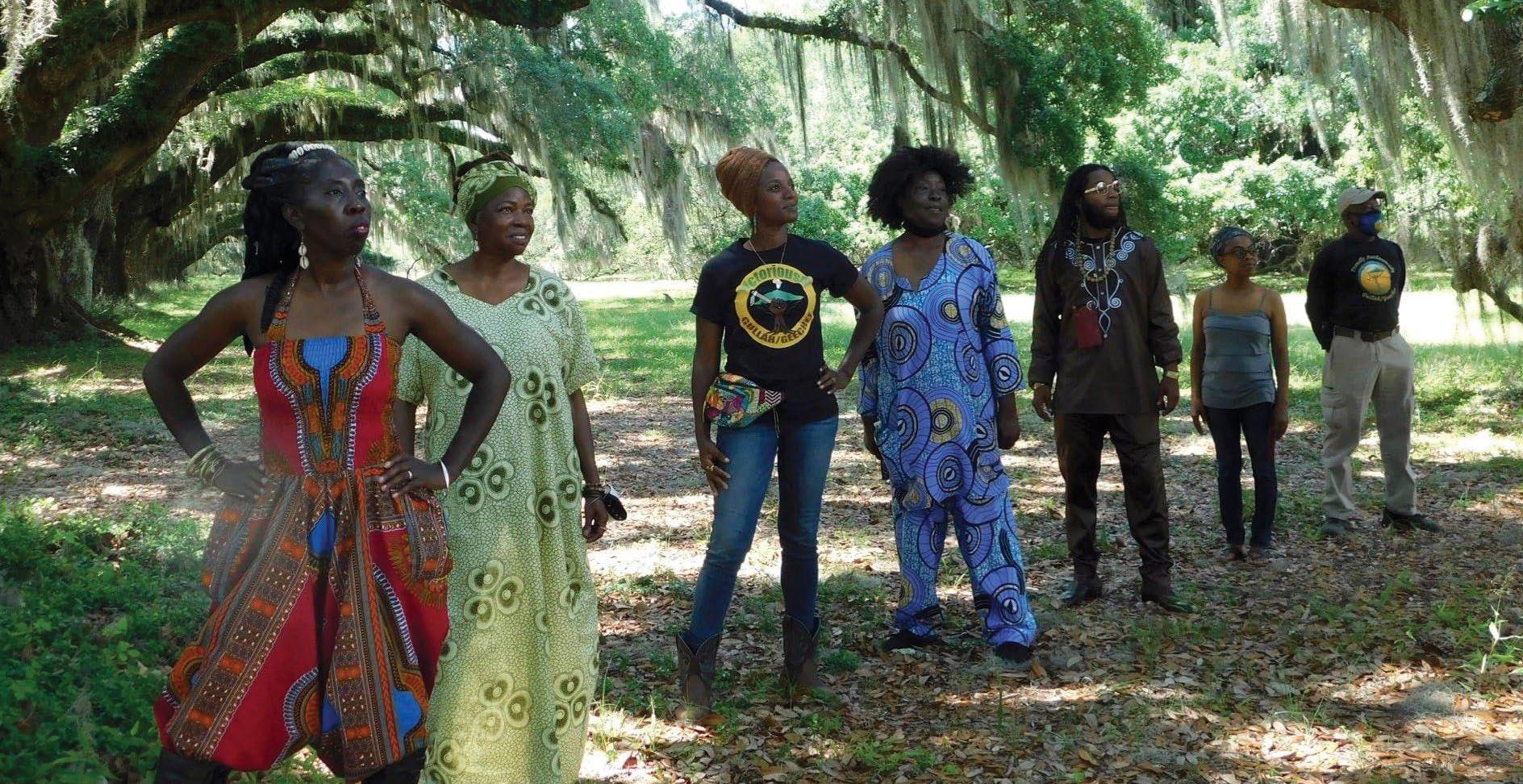 By Molly Hulsey gsa@scbiznews.com
By Molly Hulsey gsa@scbiznews.com
West Africa may be 4,000 miles away from South Carolina, but in some Lowcountry communities, the continent is much closer to home.
Gullah, also known as Geechee, people created the only African creole language unique to the United States, according to the Gullah Geechee Cultural Heritage Corridor Commission.
Some speakers consider today’s Gullah language to be mutually intelligible to the lingua franca of Sierra Leone, one of the nations along Africa’s “Rice Coast,” where the ancestors of the Gullah people lived before they were enslaved to work on Sea Island rice plantations stretching from southern North Carolina to northern Florida.
Beaufort’s Gullah communities were the first to gain freedom in the American South in 1861, and into the 20th century, residents were able to perpetuate their centuries-old traditions with little
outside influence, according to Visit Beaufort.
Despite such isolation, the Gullah Geechee language, as well as the community’s vibrant arts, music and culinary heritage, has given birth to many iconic Lowcountry touchstones, from speech patterns to shrimp and grits.
Today, coastal development and corresponding property prices have pushed many Gullah people out of of their centuries-old homelands, but efforts such as the Gullah Geechee Cultural Heritage Corridor, a 12,000-square-mile National Heritage Area, have bolstered awareness of the community through tourism and advocacy.
“We just go to old neighborhoods and tell the story about what took place in that area,” said Irwin Campbell of Gullah Heritage Trail Tours on Hilton Head Island. “Most of the neighborhoods have changed now, so I have to tell people ‘imagine what I’m talking about.’ That is so true in a lot of these
TOURIST IMPACT, from Page 22
Sea Islands right now. Developers have taken over a lot of these areas now.”
Campbell also takes visitors to see a Gullah schoolhouse, the ruins of a plantation and the site of Mitchelville, the first town in the country to be self-governed by freed enslaved people after the signing of the Emancipation Proclamation.
Mitchelville, visited by abolitionist Harriet Tubman after she heard stories about the town’s success, is now a featured site on the Gullah Geechee Cultural Heritage Corridor.
“The Gullah Cultural Corridor definitely has opened the eyes up of a lot of folks coming into this area,” Campbell told SC Biz News.
In the 27 years that Campbell has offered tours, interest in Gullah traditions has grown among tourists to the region.
“They come into different areas like Hilton Head, Charleston, Beaufort, Savannah even, to get the specifics, you know: to learn about the language, to learn more about the food, to learn more about the religion,” he said. “And so, I think even the townships in these areas or the governments in these areas are paying more attention to this culture than before.”
Here are a few sites and tours in the Lowcountry suggested to SC BIZ News by the Gullah/Geechee Nation for your next weekend at the coast:
Sites
Angel Oak Preserve, Johns Island
Tours
De Gullah Root Experience Tour, St. Helena Island
Queen Quet, chieftess of the Gullah/Geechee Nation, introduces visitors to one of the largest remaining Gullah/Geechee communities in the Sea Islands, located a few miles east of Beaufort.
Contact: Connections@QueenQuet.com
Gullah/Geechee Angel Network Tour
Elder Carlie Towne offers visitors the chance to see Charleston or Union Heights through the lens of the Gullah and Geechee experience.
Contact: ctowne@gullahgeecheeangelnetwork.com
As a faith-based partner of the International African American Museum, CSU is excited about this historical moment in Charleston.

A Charleston Southern University education is your Passport to Purpose. You will be equipped with a biblical worldview as you increase your competencies to perform at the highest levels. Declare your purpose with one of our 80+ undergraduate, graduate, or doctoral programs, and expect to receive individualized attention on your CSU academic voyage.
Learn more about CSU at charlestonsouthern.edu
The Angel Oak, a 400 to 500-year-old live oak, presides over what the Lowcountry Land Trust plans to make a 44-acre park on the island through the support of the Gullah/Geechee Sea Island Coalition.
The new park will feature boardwalk trails, a nature-oriented playground and interpretation of the site’s 1,000-year history, including the plantation home and cabins that once housed enslaved workers on the site, according to the Lowcountry Land Trust. The trust expects to launch construction on the park in 18 to 24 months.
Beaufort National Historic Landmark District and Visitor Center
Another site in the Reconstruction-Era National Historical Park, the Beaufort National Historic Landmark District became a command center for Union Army operations after they occupied the town See TOURISM, Page 25
This summer, South Carolina will become home to the secondlargest African American museum in the country. When the International African American Museum (IAAM) opens its doors on June 27, the public will get a glimpse into one of South Carolina’s most ambitious cultural projects to date.
On May 10, Furman University’s Riley Institute awarded IAAM the 2023 Building OneSouthCarolina Partners in Progress Award in recognition of the museum’s completion and the catalytic effect it will have on social and economic progress for years to come.

Indeed, the sheer effort it took to get to this moment of IAAM’s grand opening is itself remarkable. The project began 23 years ago, when Charleston Mayor Joe Riley read “Slaves in the Family” and recognized the egregious omissions in our state’s and country’s narratives that obscured the legacy of slavery and erased the vast contributions and international heritage of enslaved Africans and their living ancestors.
Thus began years of painstaking work to get community buy-in on the very concept of the museum, countless hours spent planning the museum’s design and collections, and tireless efforts to generate the necessary resources — totaling over $100 million — through investments from myriad public and private sources.

It is easy to see the upcoming opening of the museum as a culmination of these efforts and a crowning achievement of social progress in our state, and, in some respects, it is. To paraphrase IAAM CEO Tonya Matthews, the very fact that the state of South Carolina is now home to the country’s second-largest African American museum and that its creation was initiated by a white man from a longstanding Charleston family is a remarkable testament to what is possible and how far we have come.
The museum’s opening, however, is just the beginning of what it will achieve. Its approach to telling the full African-American story allows us to push beyond a national narrative that incorrectly positions slavery as the moment of genesis and sole pillar of self-identification for Black Americans.
While IAAM recognizes the horrors and defining legacies of slavery, it widens the perspective to shine light on the ingenuity, resilience and skills of enslaved Africans. This richer telling of our history will help all
visitors understand that our nation’s greatness owes much not only to the physical labor and sacrifice of enslaved people, but also to their intellectual, innovative and cultural contributions to early America.
IAAM’s location at Gadsden’s Wharf further enriches the museum’s empowering potential. In the words of former IAAM CEO Michael Boulware Moore, Gadsden’s Wharf is a kind of Ellis Island for Black Americans — a gateway to a lineage and heritage that predates the arrival of enslaved Africans in America and stretches well beyond our shores. This location helps shift the African American story away from a narrative that foregrounds forced participation in a white-dominated world toward a story of hard-won agency and international influence.
IAAM’s presence in Charleston also serves in some ways as a reckoning with the city’s economic history. Cash crops brought wealth to the region, but the city itself — its offices and institutions — made money levying taxes and fees for the buying and selling of slaves and the “leasing” of their services. IAAM marks this historical legacy of profiting from oppression and traces the through line to Jim Crow and continuing inequities.
Importantly, the museum presents an opportunity to stand this pernicious economic trend on its head by serving as a platform to help museum visitors seek out minority-owned restaurants, shops and other businesses.
Cultural heritage tourism is booming, with more and more people wanting to better understand the authentic human stories contained within historic sites. IAAM will help to round out Charleston’s cultural heritage landscape, drawing visitors from across the country and around the globe who are eager to learn more about the city, its international history, and their own place in it. According to the College of Charleston’s Office of Tourism Analysis 2018-19 annual report, IAAM is projected to have a $129 million annual impact on Charleston. The museum is expected to serve as a site of pilgrimage for many African Americans, who are already making a $2.4 billion annual impact on SC’s tourism economy, according to a University of South Carolina study released in 2016.
Twenty-three years ago, no one could have predicted the confluence of people, places, stories, and contemporary events that have created the perfect moment for IAAM’s opening. The museum positions South Carolina to be a global leader in fostering informed conversations and storytelling as a means of promoting greater understanding, empathy and respect across difference. I look forward to the profound effect that this museum and the stories it tells will have on each individual who visits in the months and years ahead.
According to the College of Charleston’s Office of Tourism Analysis 2018-19 annual report, IAAM is projected to have a $129 million annual impact on Charleston. The museum is expected to serve as a site of pilgrimage for many African Americans, who are already making a $2.4 billion annual impact on SC’s tourism economy, according to a University of South Carolina study released in 2016.

in 1961. Former offices, hospitals and military quarters were later purchased by formerly enslaved people.




The visitor center, a Reconstruction-Era National Historical Park site, is located at the Old Beaufort Firehouse at 706 Craven Street, Beaufort.
Enslaved people first built Brick Baptist Church in 1855 for white planters, but after their liberation in 1961, the church became hub for the Gullah Geechee community. Today, the church still serves a Baptist congregation within the Reconstruction-Era National Park.

The First South Carolina Volunteer Infantry, also known as the 33rd United States Colored Troops, was stationed at Camp Saxton, which was built on the ruins of 1730-era British outpost Fort Frederick.
On January 1, 1863, the formerly enslaved Black Americans from South Carolina, Georgia and Florida that made up the regiment first heard the Emancipation Proclamation under the boughs of the live oaks, according to the National Parks Service, which manages the site.
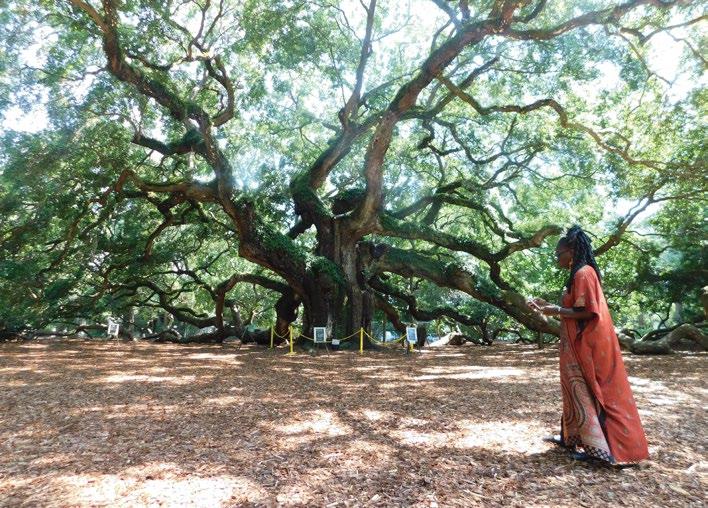
In 1885, Henry Hutchinson, born enslaved, built what is now the oldest standing house associated with the island’s free Black community. During his lifetime, Hutchinson also operated the first Blackowned cotton gin, according to the Green Book of South Carolina.
The Victorian-style home, located at 7666 Point of Pines Road, will be open to the public as a newly revitalized museum in the near future, according to The Lowcountry and Resort Islands Tourism Commission.
The Penn Center, St. Helena Island





Martin Luther King Jr. wrote his “I Had a Dream Speech” while visiting the campus of The Penn Center, the first school opened for formerly enslaved Black Americans.
Today, the former Penn School serves as a museum and heritage center for Gullah cultural and educational events within the Reconstruction-Era National Historic Park,. Guests can also tour the 25 historic school buildings or stay overnight at rental cottages onsite.


As we eagerly await the grand opening of the International African American Museum on June 27, after more than 20 years of planning, fundraising and construction, it matters that we take time to reflect on the potential of IAAM not only as a sacred, cultural space but as a transformative economic powerhouse.
In my speeches along our coastline and neighboring states, I often speak of the threads that bind our diverse Gullah Geechee communities, Wilmington, NC through Charleston, SC to Jacksonville, FL. This thread of culture and heritage is comprised of many knots and entanglements over the arc of culture, history, and economics.
In particular, the IAAM is positioned to be a knot of tourism economic impact that can transform Charleston and the surrounding region, and in particular Gullah Geechee communities.
According to Samantha Queen, director of corporate communications at South Carolina Parks, Recreation and Tourism, the SC Tourism estimated economic impact is $29 billion in 2022 with numbers tracking slightly ahead in 2023. With the opening of IAAM the expectation is that large numbers of visitors will be coming to Charleston and the region creating more revenue for local and regional tourism businesses.
But with this potential, we must be intentional and visionary in including Gullah Geechee and local African-American owned restaurants, lodging, landmarks and creators in this increased tourism revenue as owners and not just as labor.
In 2021, the Gullah Geechee Cultural Heritage Corridor Commission released a market research study indicating that Gullah Geechee Cultural Heritage Tourism has a potential of generating $34 billion tourism dollars annually. That’s a gamechanger.
During a recent chat with Michael B. Moore, former president and CEO of the museum, he shared with me: “The IAAM was designed to be a place that informs, but in so doing also inspires even more curiosity. It tells the stories about those who landed where the museum is built, but also shares the broader stories about the history that was created throughout the region. IAAM might attract people to the Lowcountry, but it will then direct visitors throughout the region to learn the ‘rest of the story.’”
Understanding the IAAM role as an economic gateway, if you will, as visitors learn from the nine exhibition spaces in a 100,000-square-foot building including researching DNA from the Center for Family History, designed to be a leading national genealogical research center. They will seek stronger connections by venturing out beyond Charleston.
If positioned correctly, IAAM can be a regional economic engine helping to create wealth in Gullah Geechee communities which will overflow into traditional tourism businesses.
In 2020, TD Community Development Corp. (TDCDC), a wholly owned subsidiary of TD Bank, N.A., announced its allocation of New Markets Tax Credits to the International African American Museum in Charleston, to assist in its construction project and opening. This represents an investment of $5.5 million.
Company officials said the investment will also help create 186 jobs in the Charleston community along with apprenticeship and fellowship programs. This is real direct impact.
According to an article in ArtNet, the IAAM staff of 30 will double in size by the time the museum opens in June 2023. These are real numbers in new professional career positions, museum administration, management, communications, curator and community/faith-based outreach, not traditionally filled by African Americans in South Carolina. These numbers represent people placing their hard-earned salary back into the local community.
To see faces that look like mine in positions of authority in a cultural space with a potential to attract a global audience engenders a variety of emotions. As founder of a chamber of commerce, which is a traditional capitalistic entity, there is an expectation of leading with strategy and logic. However, as a Gullah Geechee, I lead not only with logic but with ancestral knowledge and understanding of the spirit.
When starting the Gullah Geechee Chamber of Commerce in 2018 with the mission of creating global awareness, profitability and sustainability of African-American businesses and other entities impacting the Gullah Geechee community, I visualized how the Gullah Geechee Chamber and IAAM could partner together to create economic resilience in the Gullah Geechee community and across the region.
In the 2022, as a charter member, I was invited to meet with IAAM staff and tour the museum. It was an emotional day for me as an African American and Gullah Geechee. As I understand, the IAAM is another piece of the global arc as it bends toward justice, but also a step in creating economic resilience and ownership in our Gullah Geechee community.
Great wealth was created through our enslaved ancestors who were kidnapped and brought to North America, 40% transported, bought and sold through Charleston, because of their knowledge of how to control the water and manage the land to grow the indigo, rice, sugar cane and sea island cotton.
It is fitting that the final location of the IAAM is on the Charleston waterfront, at Gadsden’s Wharf, once the site of a trading port where hundreds of thousands of the enslaved first stepped onto American soil. A site just as meaningful as Ellis Island, and the Statue of Libery.
But this grand opening can only be meaningful and impactful, if it is met with creative and imaginative partnerships with the IAAM as a leading economic development engine.
Marilyn L. Hemingway, civic leader and entrepreneur, is the founder and president of the Gullah Geechee Chamber of Commerce, the Gullah Geechee Chamber Foundation and The Hemingway Group communications firm. In 2022, Hemingway received a presidential appointment to the Gullah Geechee Cultural Heritage Corridor Commission.
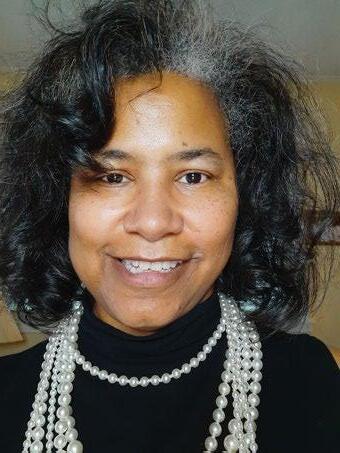
The IAAM is positioned to be a knot of tourism economic impact that can transform Charleston and the surrounding region, and in particular Gullah Geechee communities.
The International African American Museum features nine galleries housing 11 core exhibits and one changing exhibit that rotates two to three times annually. The core exhibits include over 150 historical objects, over 30 works of art, nearly 50 films and digital interactives.

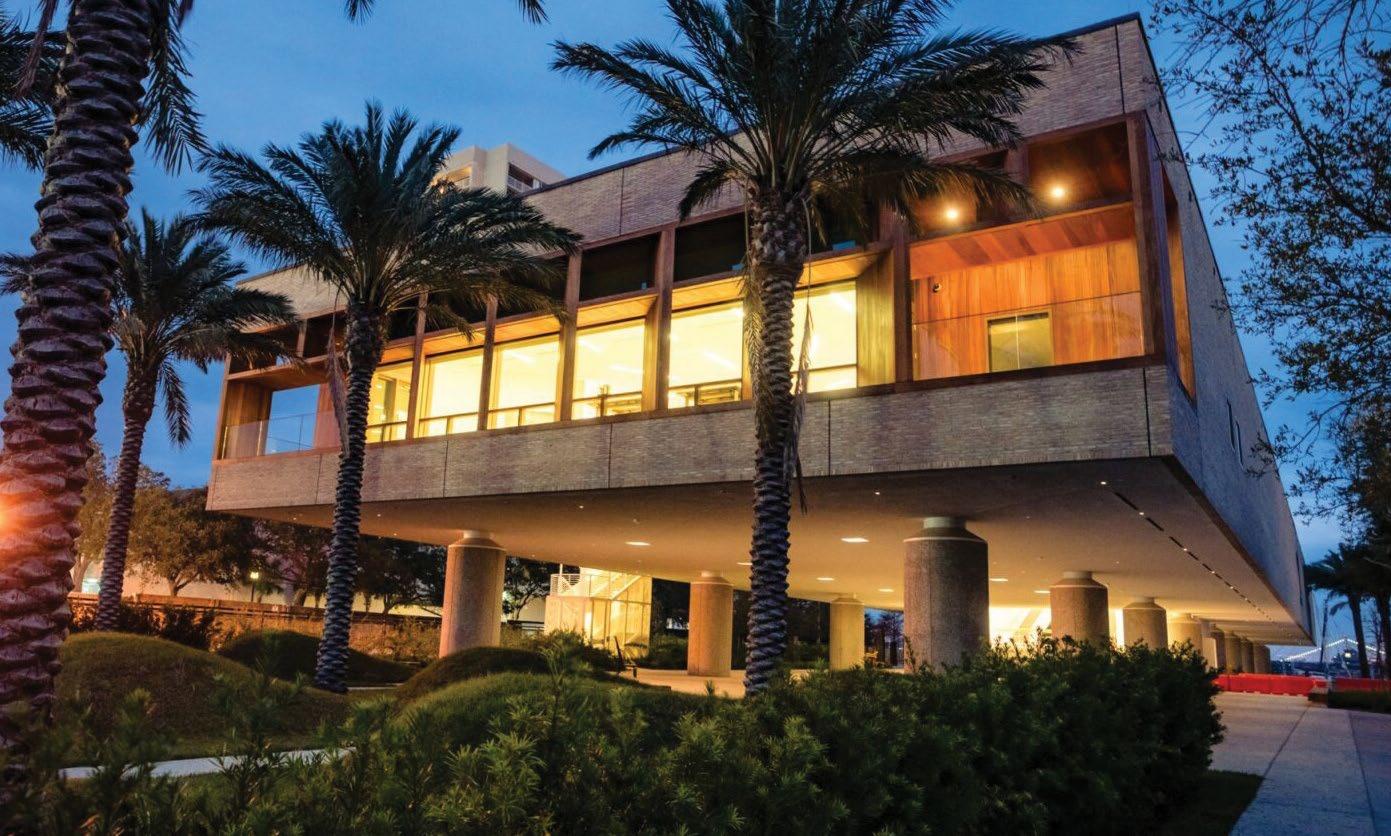
Transatlantic
The Transatlantic Experience provides visitors with a large-scale immersive media experience. Situated as the entry point to the east wing of IAAM, this gallery features eight large video screens. The Theater |
The Theater features films and videos, which provide broad historical context and further orient the visitor to the overall museum experience through a narrative storytelling format.
Gullah Geechee Gallery | Gullah Geechee Exhibit
With a focus on the Lowcountry of South Carolina and Georgia, the Gullah Geechee Gallery provides an introduction to Gullah Geechee history and culture.
The South Carolina Connections Gallery focuses on African American and African diasporic history that is within and historically interconnected to South Carolina. This gallery tells
stories of resistance and achievement, from the many local, national, and international influential African Americans in South Carolina’s history.
The African Roots Exhibit explores the diverse empires, cultures, historic figures, knowledge systems, and technologies of West and West Central Africa — the areas of origin connected to Africans forced to the Americas.
The African Routes: Diaspora in the Atlantic World Exhibit illuminates stories that exemplify the influence and movement of people of African descent throughout the Atlantic World over time, from the Transatlantic slave trade to the 21st century. Atlantic Worlds Gallery | Atlantic Worlds Exhibit
The Atlantic Worlds Gallery explores the nuanced historical connections throughout the Black Atlantic World. Carolina Gold Gallery | Carolina Gold & Memories of the Enslaved Exhibits
The Carolina Gold Exhibit demonstrates the transformative impact of enslaved people who labored on plantations in South Carolina and helped build the lucrative rice industry.
The Memories of the Enslaved Exhibit utilizes quotes and insight
of formally enslaved people to examine the brutality of chattel slavery.
American Journeys Gallery | American Journeys Exhibit
The American Journeys Gallery presents key moments, figures, and movements in African American history that are interconnected with South Carolina, showing how they shaped, and were shaped, by local, national, and international cultures, politics, and economies.
Special Exhibitions Gallery
The Special Exhibitions Gallery is a 3000 square-foot space dedicated to temporary, rotating exhibits.
Men of Change | Special Exhibitions Gallery Installation
Men of Change: Power. Triumph. Truth. presents for new generations the stories of significant African American men, the known and unknown leaders who stand as national icons.
Creative Journeys Exhibit
The Creative Journeys Exhibit consists of artwork, poems, films and creative materials placed throughout IAAM.
Digital Exhibits
IAAM utilizes the Google Arts & Culture platform to develop and publish digital exhibits which explore themes and special topics relevant to the museum’s mission.
We celebrate and honor the opening of the International African American Museum and its mission to tell the untold stories of the African American journey.












Boxes of crutches that line one wall of the warehouse at Columbia’s Rhino Medical Supply are a testament to the challenges of the health care supply chain.
O cials at Rhino brought in as many crutches as they could when they learned that a shortage of them was caused by a global aluminum shortage in 2022 that caused wait times of up to four months for crutches at some health care providers.
ey were able to get crutches to some customers who needed them, but just as quickly as the global shortage emerged, it waned, leaving the supplier with a large supply of them, but no huge demand.
at’s just one of the everyday challenges facing Rhino’s CEO Lance Brown and his coworkers, who have learned since the company’s beginning in 2020 that the health care supply chain faces the same problems as that of every other industry on the market.
e only di erence being, of course, that many health care products are needed in life and death situations in hospitals, and to maintain the everyday health of millions of other patients around the country.

A supply chain glitch that delays a shipment of sneakers might be annoying, for instance, but doesn’t endanger a customer’s life. Not being able to get insulin or asthma medication in a timely manner, however, can be a threat to life.
at’s why Brown and the other workers at Rhino are doing whatever they can to streamline the supply chain for their customers and, when possible, keep as much of the process right here in the United States. And, as they have since launching in 2020, they keep an eye out for small- and medium-sized
clients who might get lost in the shu e.
“One thing that we constantly deal with is that when there is a disruption with one manufacturer in the supply chain, that eventually leads to another,” said Charles Vartanian, chief administrative o cer for Rhino Medical Supply. “During the pandemic and now, we nd that when there are disruptions that cause stress points in the chain, most large distributors and health care systems are able to get allotments, but it’s o en the smaller health care systems and clients like individual doctors’ o ces and practices that get le behind.”
Resiliency and catering to those smaller customers has been a big focus at the company since its launch in 2020.
Brown, who had spent years working with Wells Fargo, started Rhino Medical out of his garage during the height of COVID19 because he saw the need nationwide for personal protective equipment (PPE). He and his partners made an e ort to acquire PPE from U.S.-based suppliers when possible and within eight months of the launch had shipped orders of masks, hospital gowns and other equipment to 30 states. Over the course of the pandemic, they shipped millions of masks nationwide and also donated masks and other supplies to small health care providers and schools in South Carolina and other states.
As demand grew, the company expanded into o ce and warehouse space o Rosewood Drive in Columbia. Brown and his partners also grew the company’s list of products to include a wide range of health care items, not just those in demand because of the pandemic.
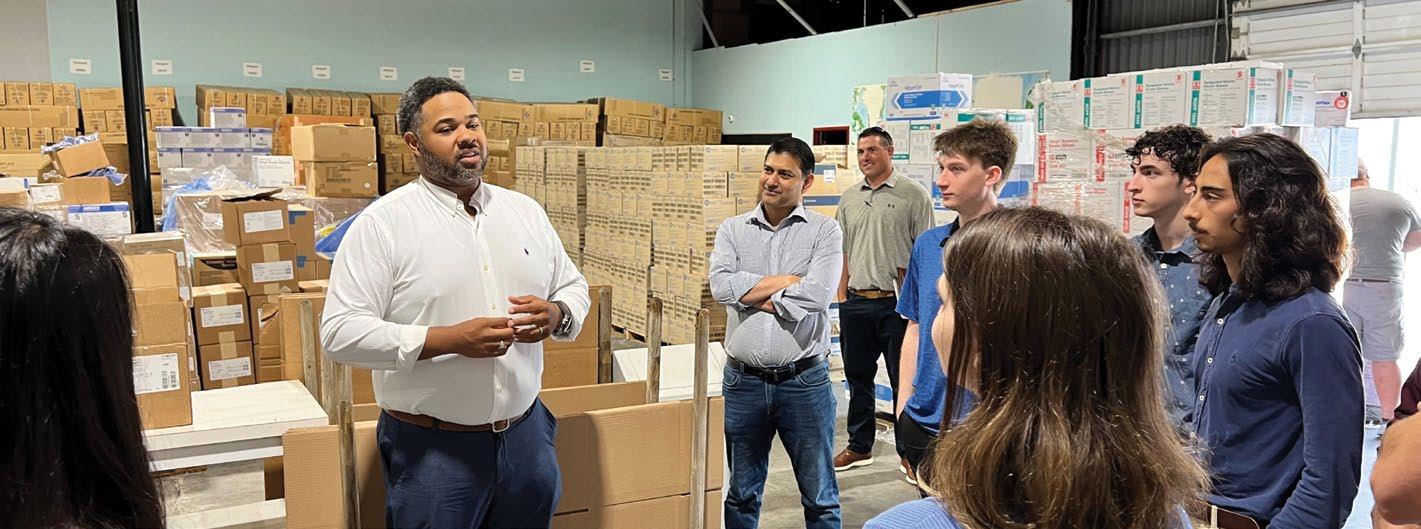
e World Health Organization o cially declared an end to COVID-19 as a global emergency in May. Rhino Medical Supply
is taking the lessons they learned from it and using them to continue to grow the company and work in new ways.
Brown, however, sees that some hospitals and other large clients have gone back to pre-pandemic practices that eventually could cause them problems.
“During the pandemic, a lot of providers did a good job of diversifying their sources for supplies — they reached out to alternative manufacturers and alternative suppliers, smaller companies like Rhino,” Brown said “Now many of them are going back to rely solely on larger manufacturers and distributors, and the next time one of those faces a shutdown or a supply chain crunch, they’re going to deal with the same shortages they dealt with during the pandemic.”
One challenge that Rhino faces in dealing with larger hospital systems is the fact that many of them are locked into what are called group purchasing orders, or GPOs, with large medical suppliers around the country. rough those deals, hospitals are given lower prices on bulk orders of items they use a lot of, like masks and syringes, but they must order a certain amount and deal exclusively with the company providing the GPO.
One way that Rhino has stepped up their game to become more attractive to a wider range of clients is forming their own brand – Ceros. rough Ceros, they rst distributed only FDA-approved syringes, but have since diversi ed to other products.
Rhino is also working to promote products by smaller U.S.-based companies that can help to ll high-volume needs. e company is currently working to get hospitals to test and eventually adopt use of
high-quality N95 masks made by a company called Lighthouse.
One of Brown’s biggest goals is to get more health care clients to look toward manufacturers and locally based suppliers for the products they need in order to head o future nightmares with overseas shipping delays that caused so many problems during the height of the pandemic.
“We need more hospital systems and other clients to be more intentional about supporting U.S. -based suppliers,” he said.
Brown and others at Rhino are also looking at ways to make the business more sustainable in the next few years, including the possibility of working with companies who make medical supplies that are easier to recycle. Sustainability is more di cult in the medical world, however, because of sanitation requirements.
“Everything is a one-time use basis in the health care system so obviously you go through a lot of disposable items, and they can’t go into normal recycling,” Vartanian said.
As Rhino looks to expand its Ceros brand and the variety of products it distributes, Brown said they are determined not to forget about the smaller customers that the company has served since its beginning. He remembers the days when individual customers were coming to the Rosewood Drive o ce to purchase COVID-19 home tests when there was a shortage. And Brown and other workers from Rhino will still regularly jump into the company’s van to deliver orders to small doctor’s o ces and other clients around the state.
“Our passion is to help people in South Carolina — local hospitals and local customers,” he said. “ at way we’re doing business and keeping the money here at home.”

Pet retail company Pet Supplies
Plus celebrated the grand opening of their state-of-the-art distribution center on May 19 at 122 Palmetto Commerce Parkway in Orangeburg.
The new 534,700 square-foot center is a $54 million investment announced last summer, expected to bring 275 new jobs to the area, according to a news release.
The distribution center will service Pet Supplies Plus stores — the company has 700 in 42 states — as well as its recently acquired company, Wag N’ Wash stores.
“Opening our fourth distribution center in the U.S. is a pivotal moment for our brand, and one our team and the community of Orangeburg alike is thrilled about,” Chris Rowland, president and CEO of Pet Supplies Plus, said in the news release. “While we grow on a national scale, we prioritize being engrained in each community we’re a part of. This will remain evident with the distribution center as we provide hundreds of jobs to those in South Car-
olina.”
As Pet Supplies Plus continues to grow at rapid rates across the country, the distribution center will fill a crucial role in fulfilling consumer, according to the company.
“We are excited to celebrate the newest addition to Orangeburg County with the grand opening of the Pet Supplies Plus distribution center,” Johnnie Wright Sr., chairman of the Orangeburg City Council, said in the release. “We are grateful to Pet Supplies Plus for selecting our community and the Shamrock Commerce Park for their newest distribution center and for creating great employment opportunities for our citizens. We look forward to having the brand become a part of our community.”
Founded in 1988, Pet Supplies Plus, a subsidiary of Franchise Group Inc., is the largest independent pet store in the United States, offering customers a selection of natural pet foods, goods and services.
The company is based in Livonia, Mich.
Reach Ross Norton at rnorton@scbiznews. comANorth Carolina-based fleet maintenance company will invest $6.9 million to move its headquarters to Lancaster County.
Snider Fleet Solutions, which provides eet maintenance solutions to the transportation and construction industries, will move into an existing facility at 1081 Red Ventures Drive in Lancaster County. e investment is expected to create 167 new jobs, according to a news release.
Snider Fleet Solutions is one of the largest service providers in the transportation and construction industries, with 80 locations nationwide, servicing over 75% of the United States. e company distributes new and retread commercial and industrial tires, while o ering mechanical services and technology solutions.
“ is relocation is an exciting next step in cementing our future as the premier provider in our industry,” said Snider Fleet Solutions CEO Marty Herndon.
“ is move gives us the space and location to best manage our expanding o erings to customers across our service area. Our corporate sta has been working in multiple o ces throughout the Carolinas. We will now be able to bring our team together and have all that talent collaborating in our new o ce.”
e company is relocating its headquarters from Greensboro and Newton, N.C. e transition will allow Snider to consolidate management operations, according to the release.
“ eir upcoming relocation and the 167 jobs they will create is a testament to the vibrant and growing economy in Lancaster County and South Carolina,” said Lancaster County Council Chair Steve Harper.
Operations were expected to be online by June 1. Individuals interested in joining the Snider Fleet Solutions team should visit the company’s careers page.
e Coordinating Council for Economic Development approved job development credits related to this project.
Reach Christina Lee Knauss at 803-753-4327.
Architect: Dewey Ervin Architectural LLC, Columbia
General contractor: McCrory Construction, Columbia
Engineers: Swygert & Associates (mechanical, plumbing); Belka Engineering Associates (electrical); Mabry Engineering Associates (structural); LandPlan South (civil)
Mabry Engineering Associates Inc., West Columbia (structural); S&ME Inc., Columbia (environmental services); F&ME Consultants, Columbia (geotechnical services)
803 Industrial Park
Trade Zone Drive, West Columbia


Developer/owner: Magnus Development
Partners, Columbia
Project description: This a speculative development adjacent to Columbia Metropolitan Airport and is set to accommodate nearly 1 million square feet across four buildings. The 252,720-square-foot Gateway 1 and Gateway 3 buildings are under construction. Gateway 3 is fully leased ahead of delivery by Givens, a full-service warehousing, transportation and logistics company. Gateway 1 is 20% leased by Mattress Warehouse. Gateway 4 will consist of 408,240 square feet.

Engineers: ETI Engineering LLC, Columbia (electrical); Felkel & Hastings, Columbia (mechanical); Swygert and Associates, Columbia (plumbing)
Estimated completion date: First quarter 2023 Project description: McCrory did a historic restoration of the Hair Building, constructed in 1923 — the most recent tenant was the Thirsty Parrot — to convert the space into a 3,000-squarefoot independent bookstore. The stucco has been removed from the facade to restore the historic brick appearance. New storefront will reflect the 1965 look of the building. Roofing repairs will be made, and extant windows will be reopened and restored.
Estimated completion date: Spring 2023
Project description: This new shell space for future retail, restaurant and office space overcomes a steeply sloped site. Special features include a rooftop patio.
Estimated completion date: October 2023
Estimated total cost of project: Approximately $15.4 million
All Good Books
734 Harden St., Columbia
Developer/owner: All Good Books
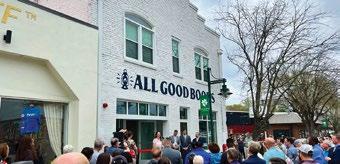
Brentwood Development
1514 Brentwood Drive, Columbia
Developer/owner: Cason Development Group
Architect: Garvin Design Group
General contractor: Boyer Commercial Construction

C. M. Tucker Jr. Nursing Care Center — Fewell Pavilion Renovation
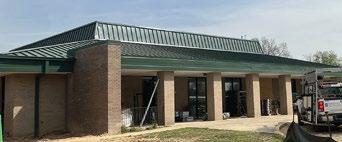
2200 Harden St., Columbia
Developer/owner: South Carolina Department of Mental Health, Columbia
Architect: GMK Associates Architectural Division Inc., Columbia
General contractor: Gillam & Associates Inc., Aiken
Project manager: GMK Associates Architectural Division Inc., Columbia
Engineers: The LandPlan Group South, Columbia (civil engineering); GMK Associates Engineering Division, Columbia (mechanical, electrical, plumbing, and fire protection); WM Building Envelope Consultants LLC (roofing/waterproofing);
Project description: Conversion of the existing 45,684-square-foot Fewell Pavilion for use as a temporary COVID-19 isolation ward/quarantine space for South Carolina Department of Mental Health and Veterans Administration nursing home patients in South Carolina. The single-story structure, constructed in 1970, required full gutting and upgrades to all mechanical, electrical and plumbing systems, roofing and infrastructure. The completed building will include an isolation wing with 18 resident rooms, a quarantine wing with 27 resident rooms, a warehouse wing, and administrative areas in the central core. Carolina
Architect: Davis Architecture
General contractor: Cohn Corporation

Project manager: Cohn Corp.
Engineers: HB Engineering, Lexington (civil); Michael Vaught Engineering, West Columbia (mechanical); Belka Engineering, West Columbia (electrical); Tobias & West, Charleston and Columbia (structural)
Estimated completion date: July 2023
Project description: Cohn Corp. has been contracted to design and construct a new 16,000-square-foot building on the existing property of Carolina Fabricators. The site will include a concrete apron connecting to an existing building. The pre-engineered metal building will include two restrooms, one office and interior metal liner panels. Cohn also will provide a new 9,000-square-foot laydown yard extension.

Columbia Project manager: GMK Associates Architectural Division Inc., Columbia
Engineers: The LandPlan Group South, Columbia (civil); GMK Associates Engineering Division, Columbia (mechanical, electrical, plumbing, and fire protection); ADC Engineering, Irmo (structural); WM Building Envelope Consultants LLC (roofing system design); F&ME Consultants, Columbia (environmental services)
Estimated completion date: Summer 2024
Estimated total cost of project: Approximately $9.2 million
Project description: Originally completed in 1894, the Columbia Mills Building is recognized as one of the state’s largest historical artifacts and is believed to have been the first textile plant in the nation to be operated by electricity. The plant closed in 1981; the building was later donated to the state and subsequently listed on the National Register of Historic Places. GMK is leading design efforts for ongoing renovations (roof systems, windows, atrium area, exhibit areas) to this historic asset.
Engineers: Snell Engineering Consultants, Sarasota, Fla. (structural); Reese Hackman Engineering Inc., State College, Pa. (mechanical, electrical, plumbing); Civil Engineers of Columbia, Columbia (civil)
Estimated completion date: Fourth quarter 2023
Project description: McCrory is building a second phase of independent living apartments at the Lowman Homes in Chapin. The apartments are arranged around a central courtyard with a lush landscape design, featuring porches to enhance outdoor recreation and interaction among neighbors. The neighborhoods include 4 one-bedroom and 14 two-bedroom apartments ranging from 740 to 1,018 square feet, along with two community rooms.
Estimated completion date: February 2024
Estimated total cost of project:
Approximately $2.6 million
Project description: Design services for the replacement of window systems in the Brown Building and the Dennis Building, located on the state capitol complex. The existing windows being replaced are color-finished metal operable windows. The new window systems will be fixed storefront windows with low-e insulated glass and integrated blinds. The frame profiles of the new windows, which were selected for higher efficiency, are very close in appearance to the original windows to maintain architectural integrity.

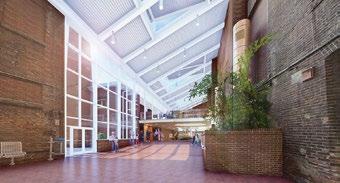
301 Gervais Street, Columbia
Developer/owner: South Carolina Department of Administration, Columbia
Architect: GMK Associates Architectural Division Inc., Columbia
General contractor: Tyler Construction Group,

2101 Dutch Fork Road, Chapin
Developer/owner: Lutheran Homes of South Carolina Inc.
Architect: RLPS Architects, Lancaster, Pa.
General contractor: McCrory Construction, Columbia
Edgar A. Brown Building & Rembert C. Dennis Building Window Replacements
1205 Pendleton St. and 1000 Assembly St. Columbia
Developer/owner: South Carolina Department of Administration, Columbia
Architect: GMK Associates Architectural Division Inc., Columbia
General contractor: Leitner Construction Company of the Carolinas LLC, Rock Hill
Project manager: GMK Associates
Architectural Division Inc., Columbia
Gateway One
180 Trade Zone Dr., West Columbia



Developer/owner: Magnus Development
Partners, Columbia
Architect: Seed Architecture, Columbia
General contractor: Landmark Builders of South Carolina LLC, Columbia

Engineers: Arrowwood + Arrowwood, Greenville (structural)

Estimated completion date: Early third quarter 2023
Project description: This project is a
See CUC, Page 33
252,720-square-foot tilt-wall speculative industrial building in 803 Industrial Park. The building features 32-foot clear heights, up to 57 dock-high doors, 72 trailer drop spaces, 50-by-54-foot bays, early-suppression fastresponse fire protection, and LED lighting. It can be subdivided for multiple users and features a 190-foot-deep truck court.
2000 S. Beltline Blvd. and 2448 Shop Road. Columbia
Developer/owner: Shop Ventures LLC / George McCutchen, Columbia
Architect: Davis Architecture, Columbia
General contractor: Cohn Construction, Columbia
Project manager: Wilson Kibler Inc., Columbia
Engineers: Cohn Const., Columbia
Architect: LS3P, Columbia
General contractor: Landmark Builders of South Carolina LLC, Columbia
Engineers: Buford Goff & Associates Inc., Columbia (mechanical, electrical, plumbing); Timmerman Structural Engineering Group, West Columbia (structural)
Estimated completion date: Mid second quarter 2023
Project description: This 45,000-squarefoot state-of-the-art medical facility houses
(mechanical, electrical, plumbing); Timmerman Structural Engineering Group, West Columbia (structural)
Estimated completion date: Late second quarter 2024
Gateway Three
180 Trade Zone Dr., West Columbia
Developer/owner: Magnus Development Partners, Columbia
Architect: Seed Architecture, Columbia
General contractor: Landmark Builders of South Carolina LLC, Columbia
Engineers: Arrowwood + Arrowwood, Greenville (structural)
Estimated completion date: Early third quarter 2023
Project description: This project is a 252,720-square-foot tilt-wall speculative industrial building in 803 Industrial Park. The building features 32-foot clear heights, up to 57 dock-high doors, 72 trailer drop spaces, 50-by-54-foot bays, early-suppression fast-response fire protection, and LED lighting. It can be subdivided for multiple users and features a 190-foot-deep truck court.


Estimated completion date: June 6, 2023
Estimated total cost of project: $2 million
Project description: This project is renovation of the former Intertape Polymer property, which is beside Gills Creek, and cleaning up the area for warehousing (not manufacturing) to make it green and clean.

Lexington Medical Center’s Graduate Medical Education program in affiliation with the University of South Carolina. The three-story building features instructional space, multiple patient care clinics with exam and procedure rooms, and a rooftop terrace. Finishes include brick veneer, curtain wall, pre-manufactured canopies, aluminum batten screen wall and trellis, and roof pavers.
Project description: Lexington Medical Center and the University of South Carolina are expanding the university’s College of Nursing with a 52,000-square-foot nursing facility on the hospital’s campus. The state-of-the-art building features a simulation suite and exam rooms, a home-health learning center, three skills labs, flexible classrooms, and academic support spaces. Finishes include brick veneer, curtain wall, pre-manufactured canopies, aluminum batten screen wall and trellis, and roof pavers.
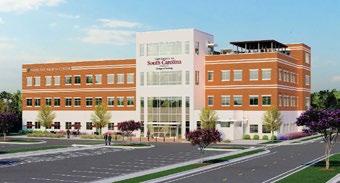
Lexington Medical Center and University of South Carolina College of Nursing
150 Sunset Court, West Columbia
Lexington Self Storage
108 Hermitage Road, Lexington
Developer/owner: Hermitage Road Investors LLC
Architect: Davis Architecture
General contractor: Cohn Corp.
Project manager: Cohn Corp.

Scan to learn more!

Medical Center Graduate Medical Education Facility
145 Sunset Court, West Columbia
Developer/owner: Lexington Medical Center, West Columbia
Port City simplifies your company’s transportation management by handling the crucial tasks so you can focus on what you do best. We value exceptional service in every client interaction and recognize that one solution does not fit all. We evaluate your transportation needs, discover inefficiencies, and deliver the best value for your supply chain spend. Port City ensures you get the transportation management that’s right for you.

Developer/owner: Lexington Medical Center, West Columbia
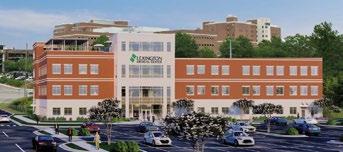
Architect: LS3P, Columbia
General contractor: Landmark Builders of South Carolina LLC, Columbia Engineers: Buford Goff & Associates, Columbia
Engineers: HB Engineering, Lexington (civil); Tobias & West, Charleston and Columbia (structural); Belka Engineering, West Columbia (electrical); GMK Associates, Columbia
See CUC, Page 34
We tackle the biggest logistics & transportation problems, daily.
(mechanical)
Estimated completion date: September 2023
Project description: This three-story 96,570-square-foot self-storage facility will contain 614 climate-controlled storage rooms, two elevators, four restrooms, and an office. The building construction is conventional framed steel structure with concrete slab on grade and two concrete slabs on metal decking for the second and third floors. Exterior walls will be light-gage insulated steel-framed walls, brick veneer, board and batten siding, and metal paneling.
Publix Super Market at North Pointe
10128 Two Notch Road, Columbia
Developer/owner: Publix Supermarket, Lakeland, Fla.

Architect: Little Diversified, Charlotte
General contractor: McCrory Construction, Columbia
Engineers: Little Diversified, Charlotte (structural); Brandt Engineering Inc., Midlothian, VA (mechanical, electrical, plumbing)
Estimated completion date: Second quarter 2023
General contractor: Hill Construction Company, Columbia


Estimated completion date: September 2023
Project description: This project includes new construction and site work for Putnam’s Landing, on Lake Murray. The nearly seven-acre project will include a seven-story dry storage/dry stack for boats and 150 wet slips. The space also will have an area for food trucks and new marina store and facility office.

Lexington Two Performing Arts Center (L2PAC)
3211 Platt Springs Road, Springdale
Developer/owner: Lexington School District Two

Architect: Jumper Carter Sease, West Columbia
Project manager: Thompson Turner Construction, Columbia


Estimated completion date: Early 2024
Estimated total cost of project: $52 million
Project description: The Lexington Two Performing Arts Center is a state-of-the-art venue that will offer a space for performances, special events, and districtwide occasions. It will include a two-level balcony with seating for roughly 1,550, with upgraded systems in stage lighting and sound to support dance, music, theater, and more. There will be several smaller multifunctional spaces for meetings. A new district office is part of the project as well.
Project description: Interior renovations to an existing Publix store are being made during ongoing operations. This project includes the addition of a family restroom, a new prototype pharmacy, updates to the deli kitchen facility, and new energyefficient upgrades and overall cosmetic upgrades to the store. The project also includes enclosing the loading dock and concrete slab/ramp modifications.
QuikTrip

567 Spears Creek Road, Columbia
Developer/owner: QuikTrip, Tulsa
Architect: Tobin PLLC, Charlotte
General contractor: McCrory Construction, Columbia
Engineers: Norton & Schmidt, North Kansas City, MO (structural); Hoss & Brown, Lenexa, KS (mechanical, electrical, plumbing); Freeland & Kauffman Inc., Greenville (civil)
Estimated completion date: First quarter 2023
Putnam’s Landing
1201 Putnam Dr., Chapin

Developer/owner: Bear Creek Partners





Architect: Davis Architecture, Columbia
Project description: This 5,025-square-foot convenience store and gas retailer is the fifth ground-up project that McCrory has worked on with national retailer QuikTrip. Located just off the intersection of I-20 and Spears Creek Road, this new store will feature an industrial kitchen, high-end finishes throughout, and complete landscaping.
Our Giving magazine is a special opportunity to support philanthropy in the Midlands. The articles tell the heartwarming story of the community’s generosity. The winners of the Association of Fundraising Professionals Midlands Chapter Philanthropy Awards are also featured, with bonus distribution at their National Philanthropy Day luncheon.
Your advertising dollars enable the Business Report to donate advertising space to Midlands charitable organizations in a section called “Nonprofit Spotlights.” Show your support of your favorite nonprofit in Giving, the magazine of philanthropy!


120 15th St., Gaston
Developer/owner: Red Rock Developments, Columbia
Architect: MCA Architecture, Greenville
General contractor: Miller Valentine Construction, Columbia
Project manager: Miller Valentine Construction, Columbia
Engineers: PES Structural Engineers (structural); Caviness Lambert Engineering LLC (mechanical and electrical); Alliance Consulting Engineers (civil); Pasco (fire suppression)
Estimated completion date: May 2023
Estimated total cost of project: $30 million
Project description: This project includes new construction and site work for a 500,000-square-foot speculative warehouse. The building has been leased by Smart Warehousing, which will occupy it in late second quarter 2023. Exterior finishes include textured paint, bullnose dock canopies, and a FiberTite roof system. Interior office finishes include pine doors, solid-surface countertops, tempered glazing, and a combination of luxury vinyl tile, carpet, and ceramic tile flooring.


Project manager: GMK Associates Engineering Division, Columbia Engineers: GMK Associates Engineering Division, Columbia (mechanical, electrical, plumbing); WM Building Envelope Consultants LLC (roofing system design and hazardous materials inspections); Mabry Engineering Associates Inc., West Columbia (structural); McCarter Mechanical Inc., Spartanburg (mechanical equipment contractor); DNB Electric Inc., West Columbia (electrical equipment contractor); Walker White Inc., Columbia (re-roofing mechanical contractor)
Estimated completion date: April 2021 through spring 2024
Estimated total cost of project: $5.5 million (total for all projects)
Project description: Since 2016, GMK has assisted the South Carolina Department of Administration with multiple upgrades to the central energy plant facility that serves the state house complex. Projects include replacement of chiller #4, cooling towers #2 & #3, associated electrical systems, and simultaneous roofing system replacement. Other work entailed rebuild of a failed chiller compressor motor and replacement of steam pipe expansion joints. In late 2022, GMK was retained to provide full designs for replacement of chiller #3 by 2024.

for the Treatment of Historic Properties that recommended the new rehabilitative services building be designed to be “compatible with the historic materials, features, size, scale and proportion and massing to protect the integrity of the property and its environment.”
861 Muddy Springs Road, Lexington
Developer/owner: Solid Structures, West Columbia

Architect: Larry Wilund, Architect LLC, Lexington
General contractor: Solid Structures
Engineers: 4 D Engineering, Lexington (civil); Mabry Engineering, West Columbia (structural); Swygert & Associates, Cayce (mechanical, plumbing); ETI Engineering, Columbia (electrical)
Estimated completion date: June 2023
Estimated total cost of project: $1.1 million
Project description: This project includes new construction and site work for the headquarters of Solid Structures General Contracting. The building is a pre-engineered metal building on slab with exterior finishes to include stone veneer, board and batten metal siding, standing seam metal roof, and a custom cypress front canopy. Interior finishes include solid-woodstained doors, a hollow metal glass wall at the conference room, laminate casework, and luxury vinyl plank and carpet throughout.
The Therapy Place Expansion
3620 Covenant Road, Columbia
Developer/owner: Mashburn Construction
Architect: Seed Architecture
Estimated completion date: November 2023
Estimated total cost of project: $550,000
Project description: This project is a 1,300-square-foot expansion to a 7,500-square-foot existing one-level building. The Therapy Place provides physical, occupational, and speech therapy for children with special needs, a therapeutic preschool, and family support services. The addition will house a second preschool classroom to expand services to children on the waiting list, expand the TheraSuit Method intensive program, and add a family engagement room for support group and workshop meetings.
Pineview Trade Center
Longwood Road and Bluff Road Intersection, Columbia
Developer/owner: Summit Real Estate Group, St. Louis
Architects: Atlas Collaborative, Atlanta
General contractor: Brickmann Constructors, St. Louis
Project manager: Summit Real Estate Group, St. Louis
Engineers: Site Contractor: CBG Inc., Gaston (site contractor); Rogers Mechanical Contractors, Douglasville, Ga. (mechanical);
Electrical: Lewis Electrical Contractors, Alpharetta, Ga. (electrical); Rogers Mechanical Contractors, Douglasville, Ga. (plumbing); Seamon Whiteside, Charleston (civil); and Browder + Leguizamon and Associates, Atlanta (structural).
Estimated completion date: December 31, 2023
Estimated total cost of project: $28.6 million
Project description: Pineview Trade Center, a 351,540-square-foot building for lease will feature a 185-foot-deep truck loading dock, 80 trailer parking spaces, 68 dock-high doors and LED motion detectors. The construction will include tilt concrete wall panels, white roof and concrete slab floors.
1221 College S., Columbia
Developer/owner: South Carolina Department of Administration, Columbia
Architect: GMK Associates Architectural Division Inc., Columbia
Columbia VA Health Care System Center for Rehabilitative Services

6439 Garners Ferry Road Columbia
Developer/owner: Columbia VA Health Care System
Architects: Harrell Design Group, PC
General contractor: Boyer Construction
Project manager: Columbia VAHCS Engineering and US Army Corps of Engineers Charleston District
Engineers: Harrell Design Group PC (Charlotte)
Estimated completion date: September 2023
Project description: The Exterior Design and Materials followed the Secretary of the Interior’s Standards and Guidelines
Brentwood Development
1514 Brentwood Drive, Columbia
Developer/owner: Cason Development, Columbia
Architects: Garvin Design Group, Columbia
General contractor: Boyer Construction, Columbia
Engineers: Swygert & Associates (mechanical, plumbing); Belka Engineering Associates (electrical); Mabry Engineering Associates (structural); and Power Engineering (civil)
Estimated completion date: Summer 2023
Project description: New shell space for future retail, restaurant and multifamily residential development overcomes steeply sloped site. Special features include a rooftop patio.


Trade Zone Drive, West Columbia
Developer/owner: Magnus Development Partners
General contractor: Landmark Builders of South Carolina, Columbia
Estimated completion date: June 2023
Project description: The Gateway One is a 252,720-square-foot building with 196,560 square feet for lease. It will feature a 190-footdeep truck court allowing 72 trailer drop spaces, up to 57 dock-high doors, 50-foot by 54-foot bays, 32-foot clear heights, ESFR fire protection and LED lighting. Gateway Three, a 252,720-square-foot fully leased building is also under construction. Both will feature tilt-up concrete wall panels, a 45-mil white roof and non-reinforced sealed concrete.
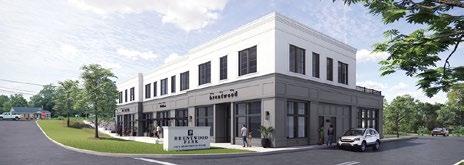
SC 29115
ASAP Search & Recruiters 16 Berr yhill Road, Suite 120 Columbia, SC 29210
EmployBridge / Hire Dynamics 2337 Augusta Road Columbia, SC 29169
Marathon Staffing 1314 Lincoln St., Suite 306 Columbia, SC 29201
Jerman Personnel Ser vices Inc. 455 St. Andrews Road, Suite C4 Columbia, SC 29210
Labor Finders 1225 Rosewood Drive Columbia, SC 29201
Gallman Personnel Ser vices Inc. 1360 Browning Road Columbia, SC 29210
Kelly Ser vices Inc. 250 Berr yhill Road, Suite 101 Columbia, SC 29210
PrideStaff 1700 Decker Blvd., Suite B Columbia, SC 29206
True Group 810 Dutch Square Blvd. Suite 235 Columbia, SC 29210
Roper Staffing 125 Outlet Pointe Blvd. Columbia, SC 29210
Express Employment Professionals 9557 Two Notch Road, Suite J Columbia, SC 29223
Aerotek Inc. 2000 Center Point Road, Suite 2100 Columbia, SC 29210
Carolina Industrial Staffing Inc. 810 Dutch Square Blvd., Suite 195 Columbia, SC 29210
Spherion Staffing 4727 D Sunset Blvd. Lexington, SC 29072
Recruiting Solutions,Inc
Main St., Suite 890 Columbia, SC 29201
803-516-9433 www.alternativestaffing.com recruiting@alternativestaffing.com
803-772-6751 www.asapsearch.com work@asapsearch.com
803-939-5888 www.employbridge.com client.ser vices@employbridge.net Kim Wallace, Stephanie Barone
803-753-1771 www.marathonstaffing.com columbia@marathonstaffing.com
803-798-0556 www.jermanpersonnel.com work@jermanpersonnel.com
803-779-1210 www.laborfinders.com lynn.ray@laborfinders.com
803-750-4878 www.gpsjobs.net gpscorporate@gpsjobs.net
803-798-0765 www.kellyser vices.us 5440@kellyser vices.com
803-782-0082 www.pridestaff.com columbia@pridestaff.com
803-748-8530 www.truegroupsolutions.com
803-798-8500 www.RoperStaffing.com Information@RoperStaffing.com
Nanci R. I. Fields MJ Sorrell R. Smith Richardson 1985
Kaziah S. Howard 1946
Jim Johnston, Shiela Wall
Jim Eberle Theresa Rhodes Shelley Lanpher, Kelly Gardner 2010
Barbara West Denise Urban Billie Dekle 1982
803-788-8721 www.expresspros.com jobs.columbiasc@expresspros.com Northan Golden
803-451-3800 www.aerotek.com Jill Tompkins
803-798-2045 www.carolinaindustrialstaffing.com kchapman@carolinaindustrialstaffing.com
803-772-4928 www.spherion.com georgiameeks@spherion.com
803-806-8125 www.recruitingsolutionsonline.com apply@recruitingsolutionsonline.com
Kodie M. Chapman 2014
manufacturing, logistics, warehousing, distribution and clerical
consumer appliance, outdoor power equipment, automotive, aerospace, food production, machining industries
manufacturing, contact center, office
administrative, financial, technical, food ser vice and event
Accounting, engineering, human resources, light industrial, manufacturing, medical administration, medical clinical, office administration, warehouse
Industrial/light industrial, contact centers, office ser vices, direct hire positions, education, onsites hospitals, insurance
Temporar y, temp-to-hire and direct hire for office, administrative support, production, manufacturing and distribution
Manufacturing, engineering, logistics, IT, call center, quality, admin, customer ser vice
Administrative support, accounting, executive management, project managers, engineers, skilled trades, management and custom recruiting
y and permanent staffing in administrative, light industrial and general labor fields
Production, light technical, skilled trades, contact center recruitment, accounting, finance, corporate support, healthcare, environmental, mechanical, electrical, design and industrial engineering, architecture, construction and specialty construction trades
administrative, light industrial, data entr y, manufacturing, electrical and medical administrative positions
Recruit and staff professionals; experience in a number of industries: accounting, call center customer ser vice, education, engineering, finance, insurance, human resources, IT, legal, manufacturing, marketing, mortgage banking, non-clinical healthcare
 By Christina Lee Knauss cknauss@scbiznews.com
By Christina Lee Knauss cknauss@scbiznews.com
Chris Benjamin has been appointed chief design officer for Scout Motors Inc.
With his appointment, Scout is accelerating development of its all-purpose, all-electric truck and SUV, slated to be in production by the end of 2026, according to a news release.
e Virginia-based EV startup hopes to break ground later this summer on 1,100 acres in the Blythewood Industrial Park where it will manufacture electric trucks and
Paul Mashburn, CEO of Mashburn
Construction, is one of ve industry professionals who will receive the 2023 Hall of Fame Award by Carolina
Associated General Contractors at the organization’s 2023 Summit & Expo in Asheville this summer.
Geotechnical engineer Stephen Nickerson has joined Goodwyn Mills Cawood as regional geotechnical leader for the Carolinas and southern Georgia. He is responsible for overseeing growth of the geotechnical division. During his career, Nickerson has managed ground improvement and deep foundations design-build construction projects, including preconstruction, estimating, design and project management. He graduated from Clemson University with a bachelor’s in civil engineering and is a registered professional engineer in South Carolina, North Carolina, Georgia and California.
New at LS3P is marketing specialist Melissa Brown



A graduate of the University of South Carolina with a bachelor’s in journalism and mass communi-
SUVs. e Scout project, announced early in March, is the largest economic investment in the history of Richland County.
Benjamin will oversee interior and exterior design of the Scout vehicles, as well as concept development, user experience and overall integration of design and technology, the release said.

“Chris’ work is proli c — for nearly 25 years he’s brought to life vehicles that stand
cation, Brown also has a graduate studies certi cate in marketing strategy from Cornell University. She brings more than six years of marketing experience from architectural and real estate rms, with a focus on responsive e orts and brand implementation through advertising and social media management.
At Benedict College, Leon Geter has become interim dean for the School of Communication, Arts and Social Sciences. He had been chair of the department of criminal justice administration and social sciences and director of the Center for Cybersecurity. Prior to joining Benedict’s faculty in 2014, Geter chaired the department of criminal justice at the New York campus of Berkeley College. In his new role, Geter provides leadership for the students, faculty, sta and programs in the department of communication and arts as well as the department of criminal justice administration. A Benedict graduate, he earned a Master of Arts in Criminal Justice from John Jay College of Criminal Justice in New York, a master’s in cybersecurity operations and leadership from the University of San Diego, and a Doctor of Management in Organizational Leadership at the University of Phoenix.
First Reliance Bank has promoted Sarah Baldwin to senior vice president of retail mortgage sales at its mortgage division.

out on the road,” said Scout Motors CEO and President Scott Keogh. “His thumb prints are all over many of the most beloved o -road vehicles in the market today. I’m con dent that Chris will build on that experience as he de nes the next chapter of design for Scout and electric utility vehicles.”
A er graduating from Detroit’s College for Creative Studies, Benjamin launched his automotive design career by joining the design team at Mercedes-Benz. In succeeding years, Benjamin pushed design and creativity at brands including BMW, Volvo, and Stellantis, spending time in both Europe and the U.S. Most recently, Benjamin led interior
design at Stellantis North America, serving the Jeep, Wagoneer, Chrysler, Dodge, and Ram Truck brands.
“I’ve been fortunate in my career to shape many o -road focused products that appeal to a broad range of American car buyers,” said Benjamin. “Classic Scout vehicles have always exerted a magnetic pull on me. ey created the archetype for the modern SUV in the ‘60s and proved that a daily driver could also be a weekend adventurer. My task now is to balance the iconic design language of the past with all of the innovative possibilities that electri cation unlocks.”
She is responsible for developing and managing relationships with referral partners and working with a team of mortgage loan o cers. In addition, Baldwin recruits talent and expands the retail mortgage footprint.
it organizations. Since joining Bank of America as part of a South Carolina predecessor bank, Frierson has served in a number of leadership positions in commercial banking, commercial credit and the private bank. He graduated from Wake Forest University with a Bachelor of Arts degree.




Vicki Boylston is the new vice chair of the Palmetto Citizens Federal Credit Union board of directors, and Jenais Y. Means is the new board secretary. Boylston worked in the labor market information department at the South Carolina Department of Employment & Workforce for more than 30 years. Boylston was on the board of SCESC Credit Union when it merged with Palmetto Citizens in 2006; at that time she was appointed to the supervisory committee and served in that role until joining the board in February 2021. Means is a National Certi ed Counselor and licensed in North and South Carolina. She joined the supervisory committee in 2021 and was elected to the board in February 2023
Bank of America Private Bank has named Gregg N. Frierson as its South Carolina market executive. In this role, he leads the e orts of the bank’s teams in Charleston, Columbia and Greenville to deliver the right solutions and products to high-net-worth individuals, families, family foundations, and endowments and other nonprof-

Rick Redden has been named to the First Reliance Bank board of directors. Redden’s experience includes working with banks, public and private companies, nonprofits and higher educational institutions. He has assisted clients with acquisitions, major investments, capital structure decisions and succession strategies. Redden earned a Bachelor of Science in Business from Appalachian State University, an MBA from Georgia Tech, and is a graduate of the University of North Carolina at Chapel Hill Executive Leadership program.
At the O ce of the State Treasurer, Leann Miller has been promoted to director of banking and Mike Addy to director of investment management. Miller joined the State Treasurer’s O ce a er working with
Benjamin Mashburn Nickerson Brown Geter Boylston Means Redden Baldwinthe Department of Disabilities and Special Needs. Her division coordinates and provides banking services for state agencies, colleges and universities to respond to their needs in selecting and implementing appropriate banking solutions as well as ensure they have adequate collateral to secure state funds. Addy rejoined the State Treasurer’s O ce in 2020 as senior portfolio investment analyst. He has more than 30 years of institutional investment experience. Previously, he worked for the SC Retirement System Investment Commission, where he managed the internal xed income portfolios. He also worked for the State Treasurer’s O ce in investments as well as with AgFirst Bank.
South Carolina’s new deputy state treasurer is Melissa D. Simmons. She replaced Tonia Morris, who recently retired. Simmons oversees the agency’s banking, investment, and treasury management divisions. She joined the State Treasurer’s O ce in 2016, initially leading the banking division. In addition, Simmons was a nancial adviser with Ameriprise Financial Advisors and served the state of South Carolina for 27 years in various auditing, management and nancial roles at the State Auditor’s O ce and at the Department of Health
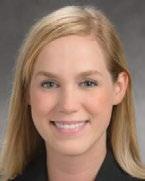

and Human Services. A graduate of the University of South Carolina, she has a bachelor’s in accounting.
Brian Critzer has joined Wyche’s Columbia o ce as a litigation associate. He focuses his practice on appeals and complex litigation, representing plainti s and defendants in state and federal courts. Prior to joining Wyche, Critzer served as senior law clerk to Kaye Hearn at the Supreme Court of South Carolina. He is a summa cum laude graduate of Greensboro College and a cum laude graduate of the University of South Carolina School of Law, where he served as articles editor of the South Carolina Law Review and was inducted into the Order of the Wig and Robe, an honor for students with outstanding academics.

Flock and Rally has expanded its creative team by adding Forrest Clonts as senior creative strategist and Rebecca Rebl as graphic artist. Clonts serves as an account supervisor and creative expert for such clients as Experience Columbia, Motor Supply Company
Bistro, Disability Rights South Carolina, Carolina Ale House, e Comet, and Riverbanks Zoo and Garden. He was a Flock and Rally contractor for more than 10 years. Clonts also served as the public information director for USC’s vice president for research and ran his own business, Forrest Clonts Studio. Rebl designs essential brand and campaign assets, print publications, social graphics, advertisements, and other deliverables. She supports the agency’s work with such clients as e Comet, Peak Dri Beverages, the University of South Carolina, York Technical College, St. Pat’s in Five Points, and the Municipal Association of South Carolina. Rebl has a Bachelor of Music with a performance emphasis from the University of South Carolina.
LRADAC has promoted Wendy Hughes to president and CEO from chief financial o cer, Hughes has 20 years of experience in nonpro t and health care administration, including 13 years as vice president and chief nancial o cer at LRADAC. A graduate of the University of South Carolina, Hughes earned her MBA from USC. She is also a graduate of Leadership Columbia. In addition to her work at LRADAC, Hughes is a surveyor for the Council on Accreditation of Rehabilitation Facilities.
John Coleman has joined Trinity Partners Columbia as a brokerage associate. Previously, he worked in commercial real estate for a regional industrial development group. Coleman graduated from Duke University with a Bachelor of Arts in Public Policy Studies and a Master of Arts in Political Science. He then received his international MBA from the University of South Carolina’s Darla Moore School of Business, where he also received certi cates in data analytics and global strategy. In addition, he completed internships with Baker & Baker and Cason Development Group.

Alyse Howard has joined Magnus Development Partners as marketing director. Prior to joining Magnus, she served in a similar role for a full-service commercial real estate rm. Howard graduated from the University of South Carolina with a bachelor’s in public relations.

This annual event recognizes forty Upstate professionals under the age of 40 who are making their mark with professional and community involvement.
June 29
2023

Executives from more than 100 companies will gather to celebrate being named one of the Best Places to Work in South Carolina, and no event this year will provide better networking opportunities!
August 10
Executives from more than 100 companies will gather to celebrate being named one of the Best Places to Work in South Carolina, and no event this year will provide better networking opportunities!
October 12

The SC Manufacturing Conference & Expo will be held in Greenville. This multi-day event includes the Salute to Manufacturing Awards Luncheon, a manufacturing expo, panel discussions, and several interactive, practical workshops.
November 9 - 10
July 26
The Columbia Women of Influence Awards celebrates the exceptional achievements of women in the midlands. We are excited to honor the trailblazers, visionaries, and leaders who are making a difference in our region’s business landscape.
September 14
This annual event recognizes forty Lowcountry professionals under the age of 40 who are making their mark with professional and community involvement.
October 25
The Charleston Women of Influence Awards celebrates the exceptional achievements of womeni n the Lowcountry. We are excited to honor the trailblazers, visionaries, and leaders who are making a difference in our region’s business landscape.
For sponsorship opportunities, contact Ryan Downing at rdowning@scbiznews.com or 864-867-1928
The Conference Board’s index of leading indicators (LEI) has been falling steadily since December 2021. The index anticipates turning points in the business cycle by around 10 months. Based on this steep slide the Conference Board, the Federal Reserve, and many private sector economists anticipate a second half recession.

But even though the index has been falling for 16 months the long-anticipated recession is not yet in sight.
Given that virtually every economic indicator has been distorted since the March/April 2020 recession, is it possible that economists are misreading the economic tea leaves? Could the LEI no longer be an accurate barometer of future economic activity? Or could it be giving us the right signal, but raising the red ag far too early?
e index of leading indicator consists of 10 components that cover a wide range of economic activity -- the stock market, consumer sentiment, the labor market, the housing sector and manufacturing. Each of its 10 components is itself a leading economic indicator.
eoretically, the performance of all 10 combined gives a better reading of future economic activity than any individual component. Historically it works fairly well but the lead times are variable and it occasionally sends a false signal. But the index has never fallen this far for this long and been wrong.
Several components of the index may be overemphasizing the extent of economic so ness that might be forthcoming.
Consumer sentiment today is not only lower than it was at the bottom of the 2020 recession when everyone was worried about COVID and the impact of the government-imposed shutdown, it is comparable to the lowest level reached in the so-called “Great Recession” of 2008-2009. But today’s economy is not nearly as weak either of those earlier periods. e worst that anybody anticipates is a “mild” recession.
Given the drop in consumer sentiment, one would expect consumers to curtail spending. But consumer spending has held up well. is is puzzling. Part of the reason could be that the 3.4% unemployment rate is the lowest in 50 years. If workers lose their job, they can easily nd another. Because there is no concern that their income stream will be interrupted they have perhaps chosen to keep spending.
In addition, during the recession con-
sumers took advantage of the stimulus checks and paid down a considerable amount of debt. As a result, their monthly debt payments as a percent of income plunged to the lowest level since the 1980s. Consumers have recently begun to boost their credit card borrowing which has boosted this ratio. But it started at a record low level and still remains far below its historical average. When consumer debt becomes a problem, delinquency rates will rise. us far delinquency rates remain at their lowest level in years.
When the economy is growing and employers need to boost output they can either hire more workers or work existing employees longer hours. When the pace of economic activity so ens they will do the opposite. Initially they will choose to shorten worker hours because they do not know whether the emerging weakness will be temporary or the beginning of a longer-lasting slump. If rms shorten hours they can easily reverse that action if orders rebound. If the economic slump is prolonged the next step would be layo s. Once that happens the economy has fallen into recession. us, changes in the length of the workweek are a leading indicator of changes in the pace of economic activity.
Firms have been shortening hours steadily since the Fed began to raise rates in early 2022 and the nonfarm workweek appears to be signaling that an economic downturn is coming. But a er the 2020 recession, the workweek surged as demand skyrocketed
once the economy reopened.
e workweek was abnormally long. While it has declined for the past two years, it is at the same level that existed prior to the recession. So, is the workweek an indicator that a sustainable pace of economic activity lies ahead? Or is this a sign that a recession is coming?
e dramatic and prolonged decline in the index of leading indicators has convinced almost everybody that a recession will occur in the not-too-far-distant future. But consumers and business leaders are not behaving exactly like they did in the past. As a result, the LEI may be overstating both the magnitude and the timing of any upcoming economic downtown.
How will we know when the recession has arrived? Easy. e Conference Board has a companion index known as the Index of Coincident Indicators. e Index of Leading Indicators tells us that a recession is coming at some point down the road. e Index of Coincident Indicators tells us when it has arrived. is index continues to climb, which means that the economy is still growing.
What indicators are included in the Index of Coincident Indicators? Payroll employment and industrial production are two of its three components. When they begin to turn downwards the recession will have arrived. Right now payroll employment continues to climb. In the past three months it has risen on average 211 thousand per month and it is unlike-
ly to dip into negative territory any time soon. Industrial production has been steady for the past year. When the recession begins this index should plunge. e index of leading indicators appears to be signaling that a recession is coming. But given that economic behavior has changed so much in the past three years, we are skeptical of both the timing and the magnitude of the economic slump. So unlike the Fed and many private sector economists we do not expect a recession to begin in the second half of this year. It will eventually arrive, but to get there we think the Fed will need to boost the funds rate to 6.0% or so.
From 1980 until 2003, when he retired, Stephen Slifer served as chief U.S. economist for Lehman Brothers in New York City, directing the rm’s U.S. economics group along with being responsible for forecasts and analysis of the U.S. economy. He has written two books on using economic indicators to forecast nancial moves and previously served as a senior economist at the Board of Governors of the Federal Reserve in Washington, D.C. Slifer can be reached at www.numbernomics.com. CRBJ

Write: Ross Norton, Editor SC Biz News
35B Cessna Court Greenville, S.C. 29607 Email: rnorton@scbiznews.com
SLIFER• Over 22,000 sq ft. of exible meeting & event space
• Largest hotel ballroom in Columbia with 10,400 sq ft. 800 sit down dinner capability
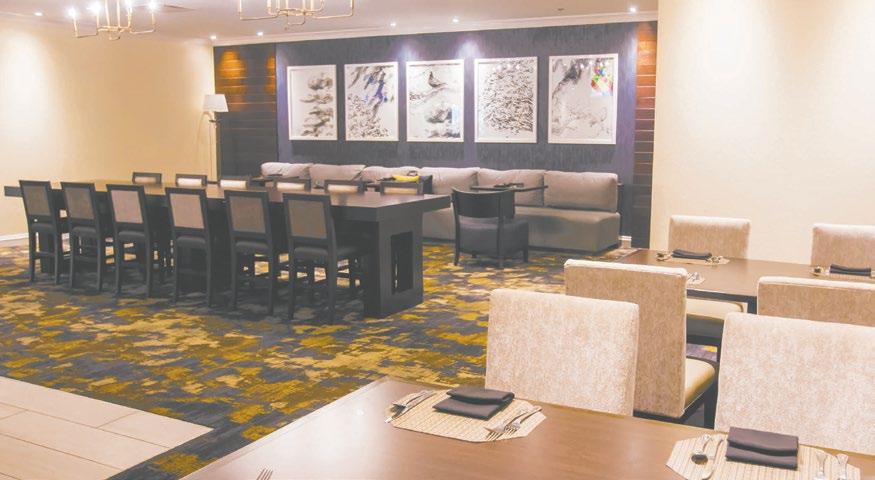

• 237 well appointed guest rooms
• Complimentary parking
• Complimentary WiFi in guest rooms and public space























• Columbo’s Restaurant - open breakfast, lunch & dinner Happy hour M-F 4pm - 7pm


• Complimentary airport shuttle
• Fitness center & outdoor pool